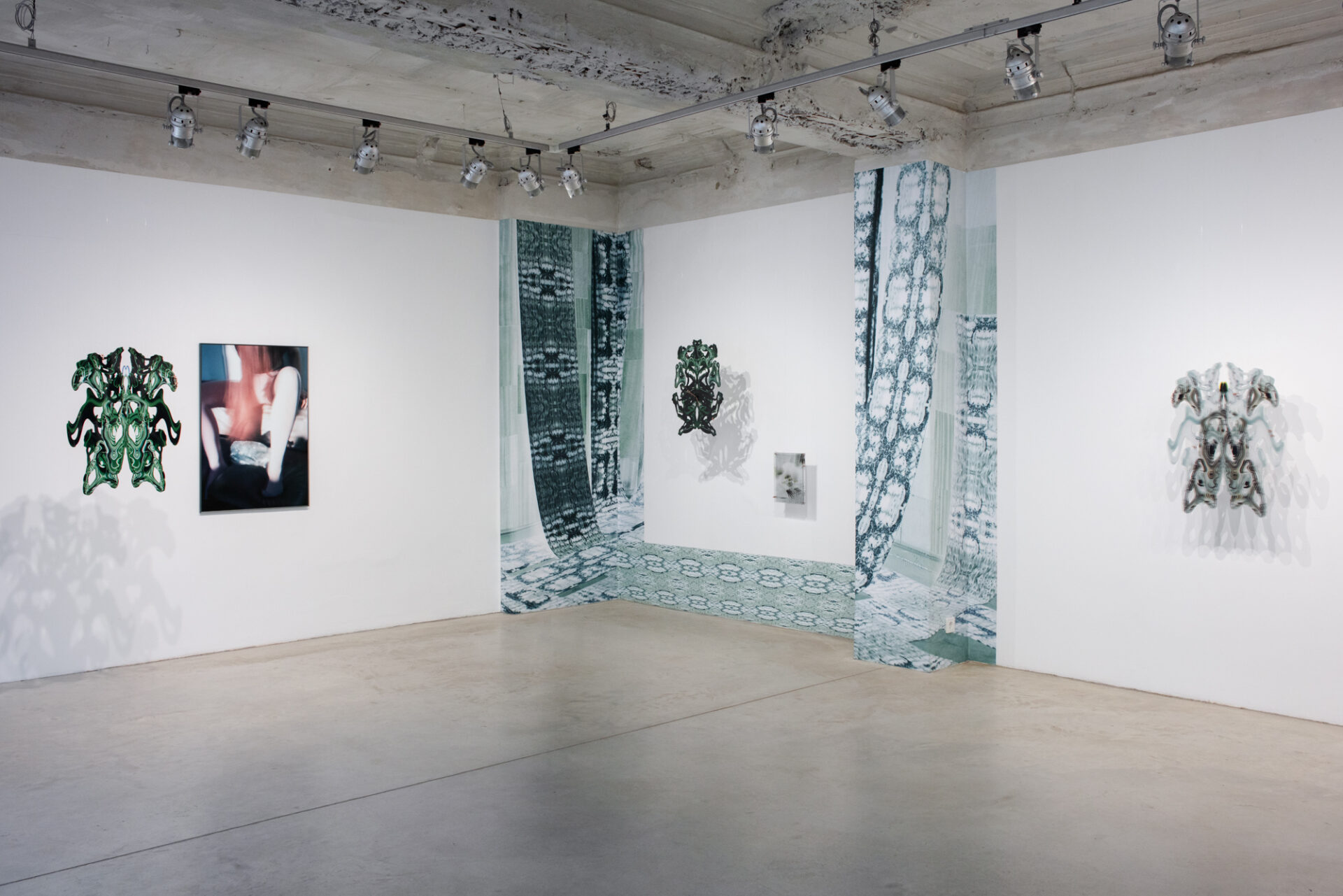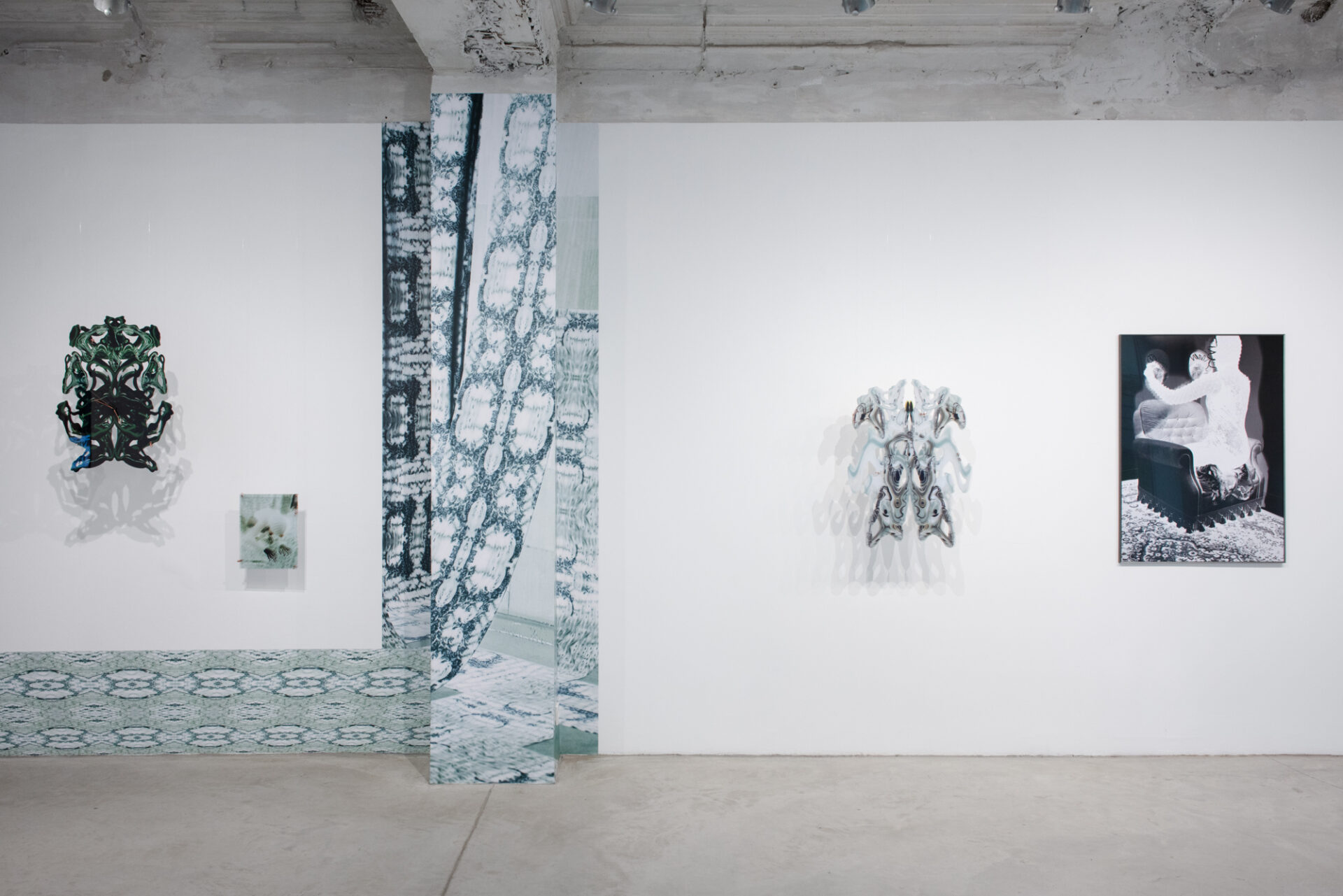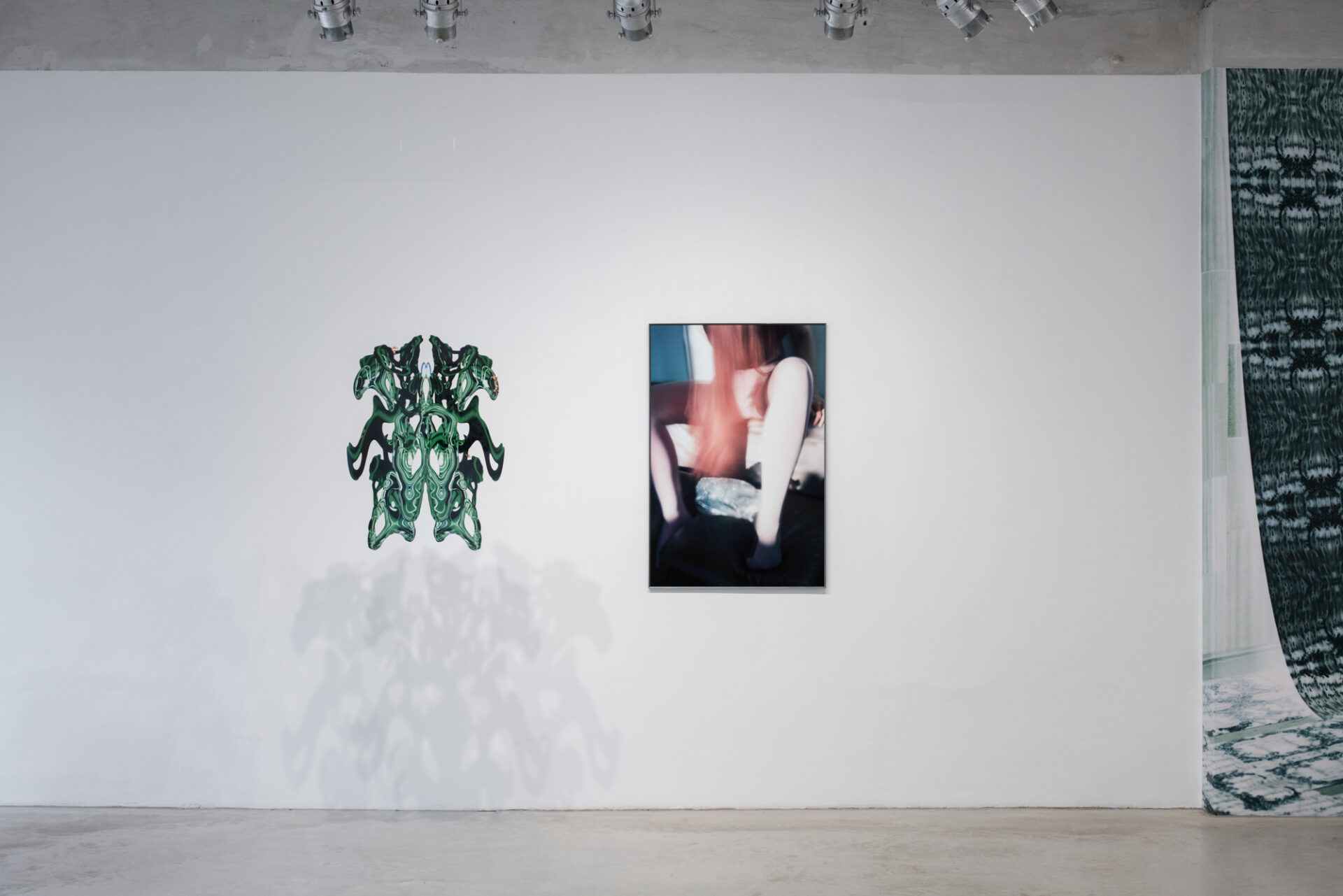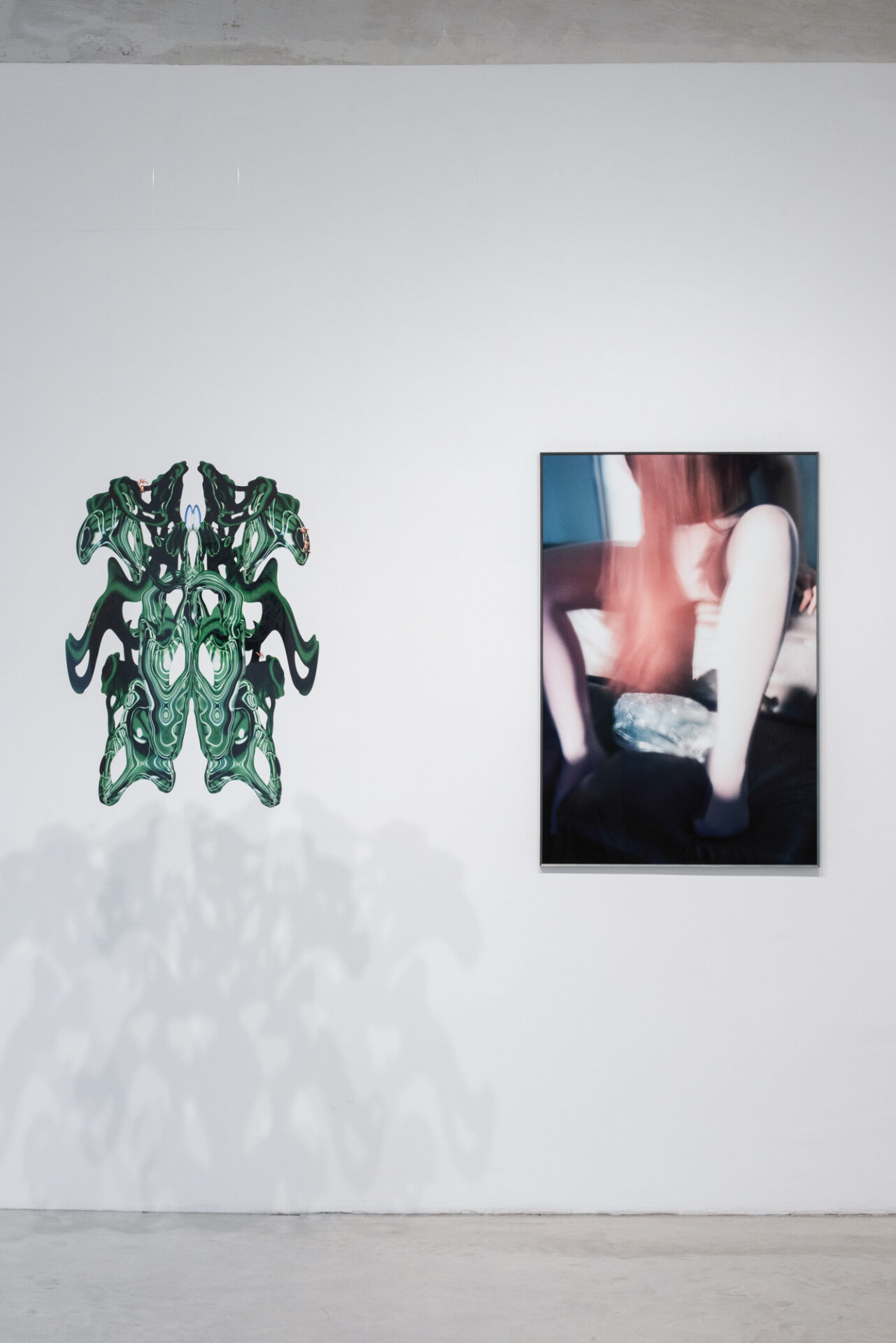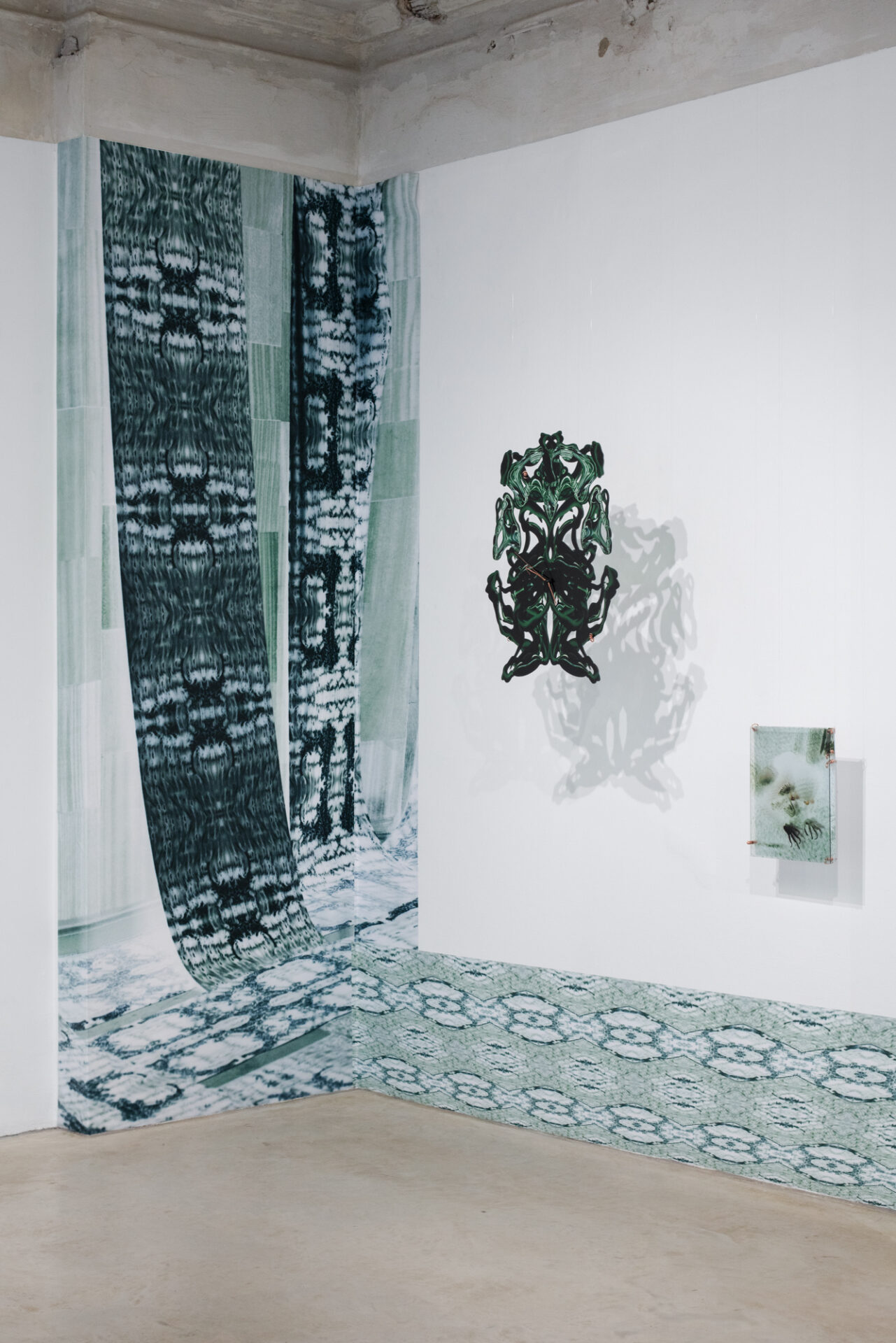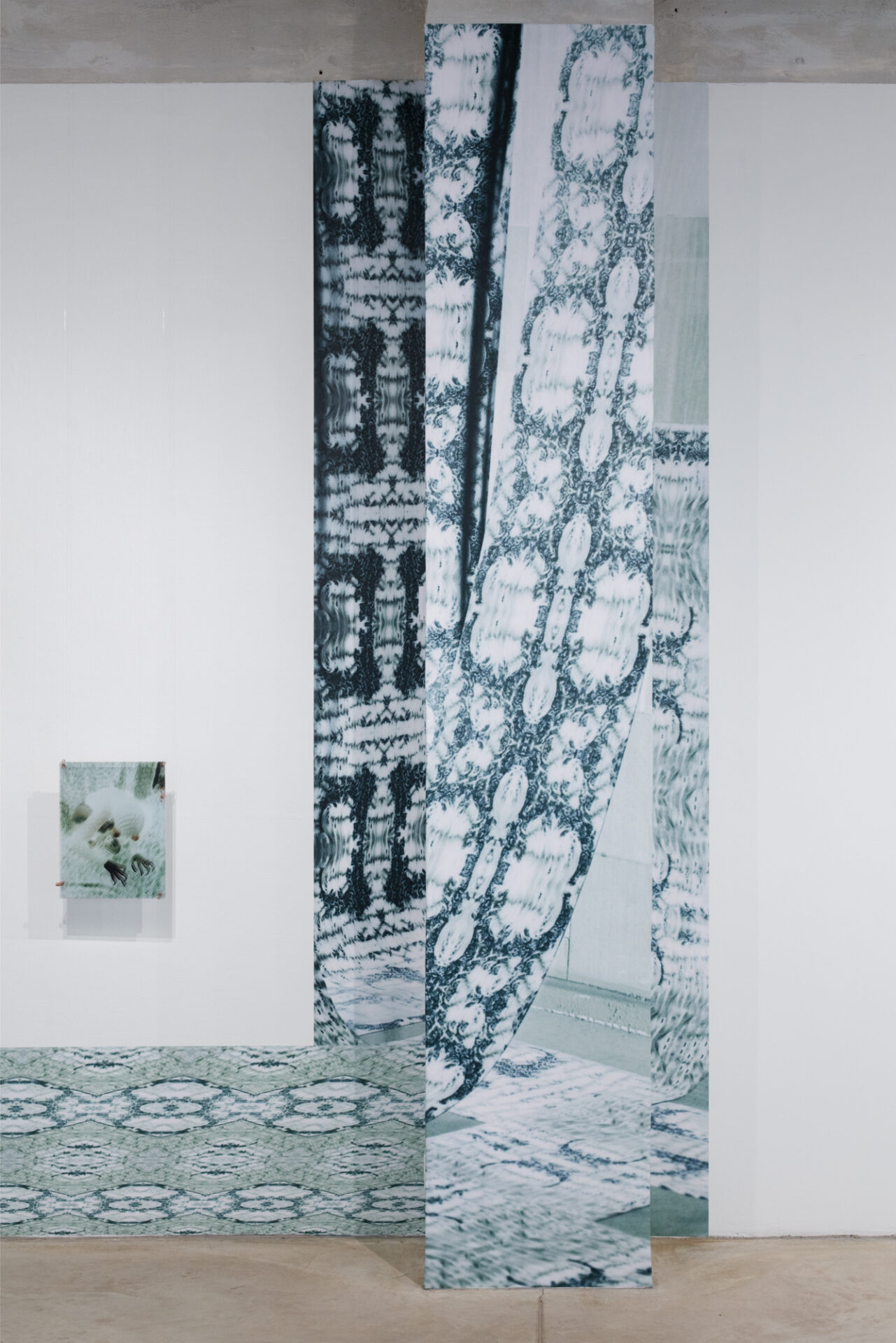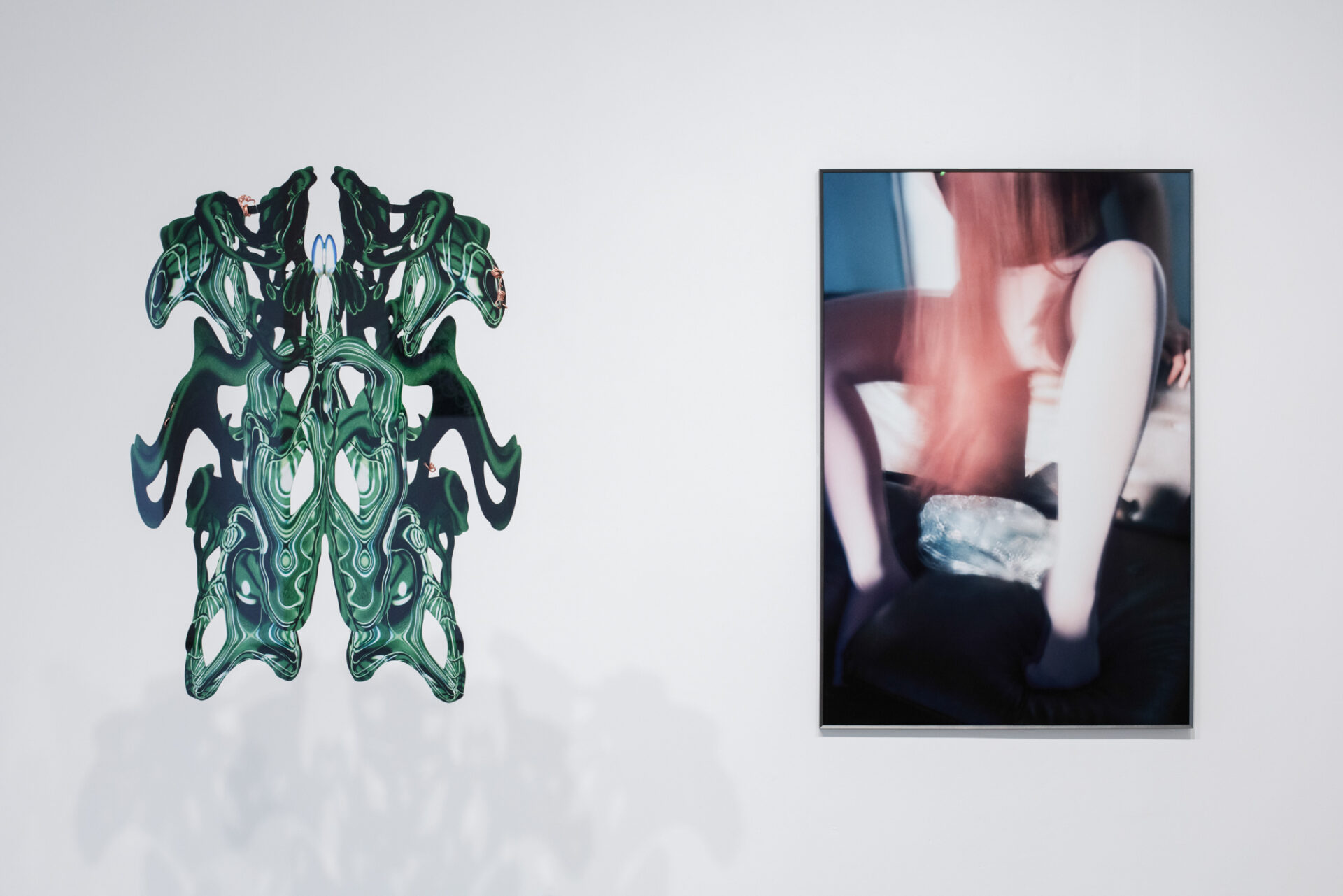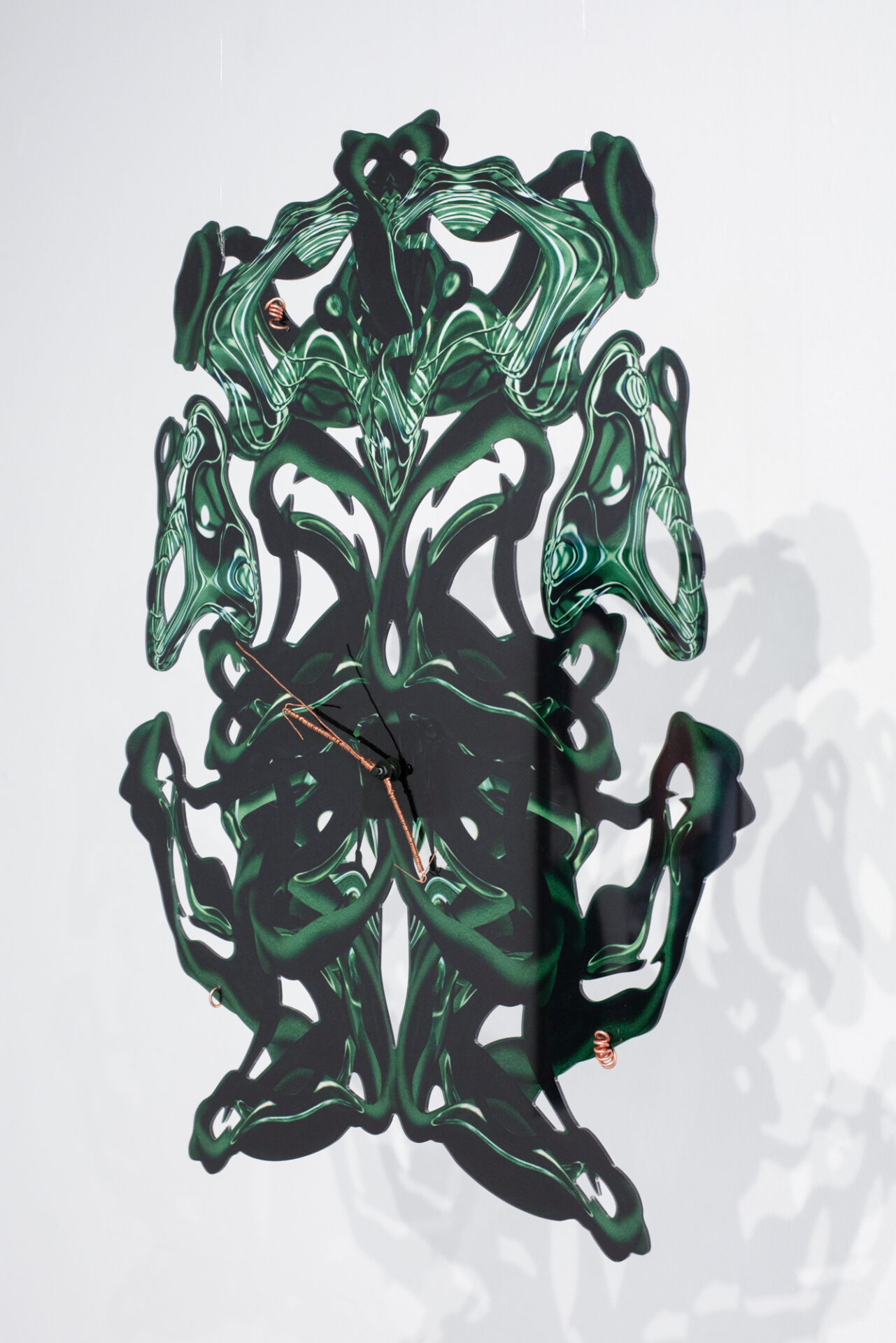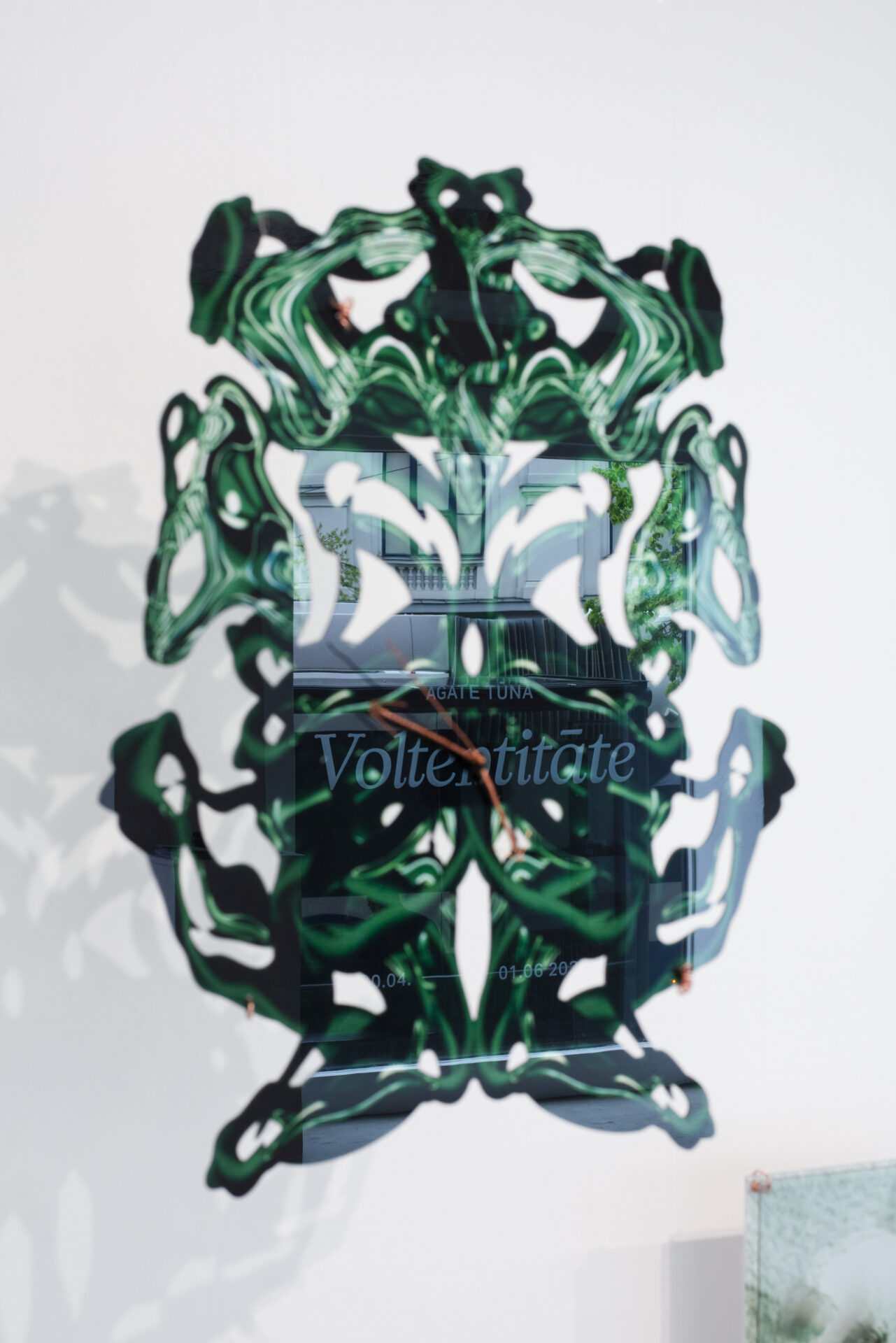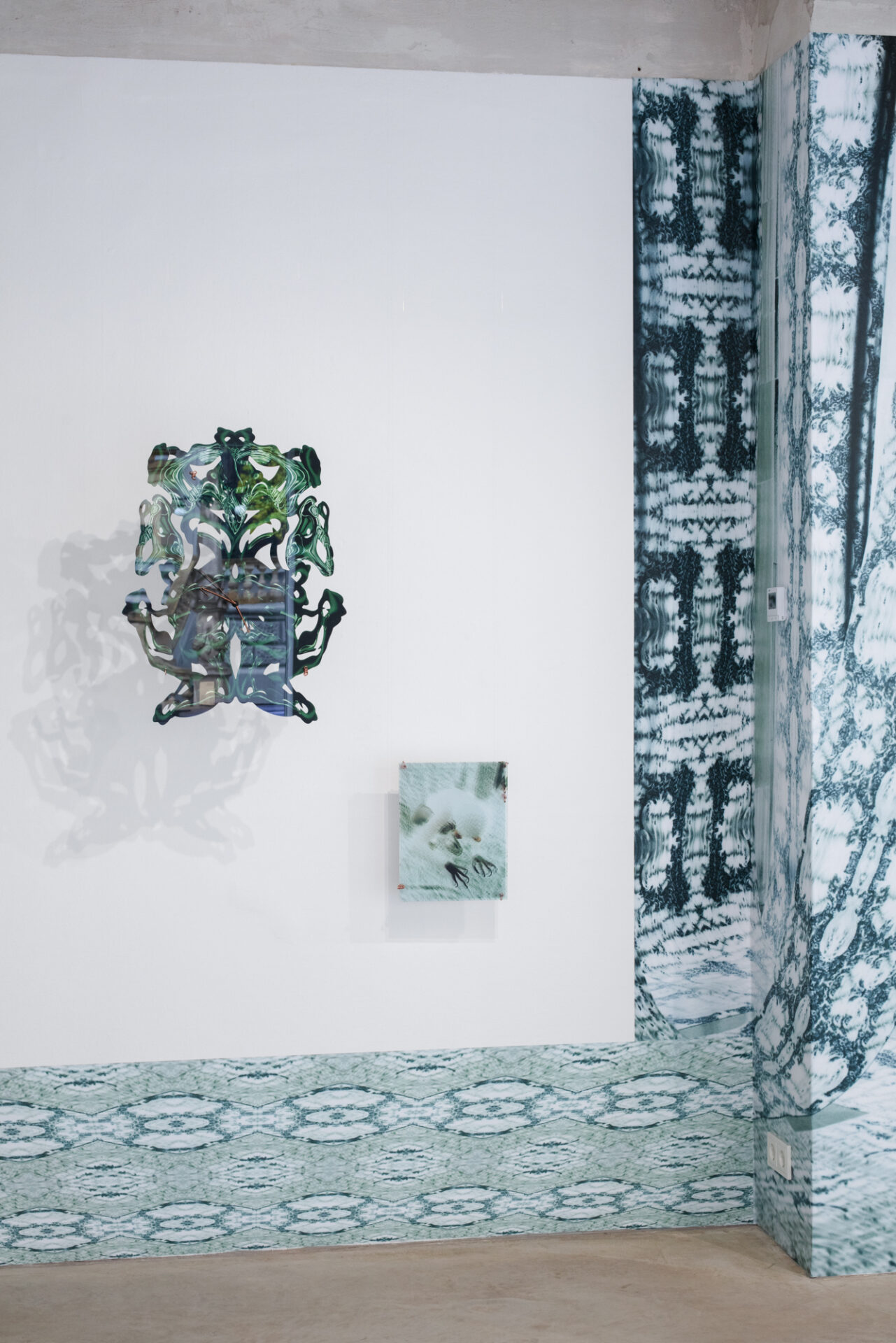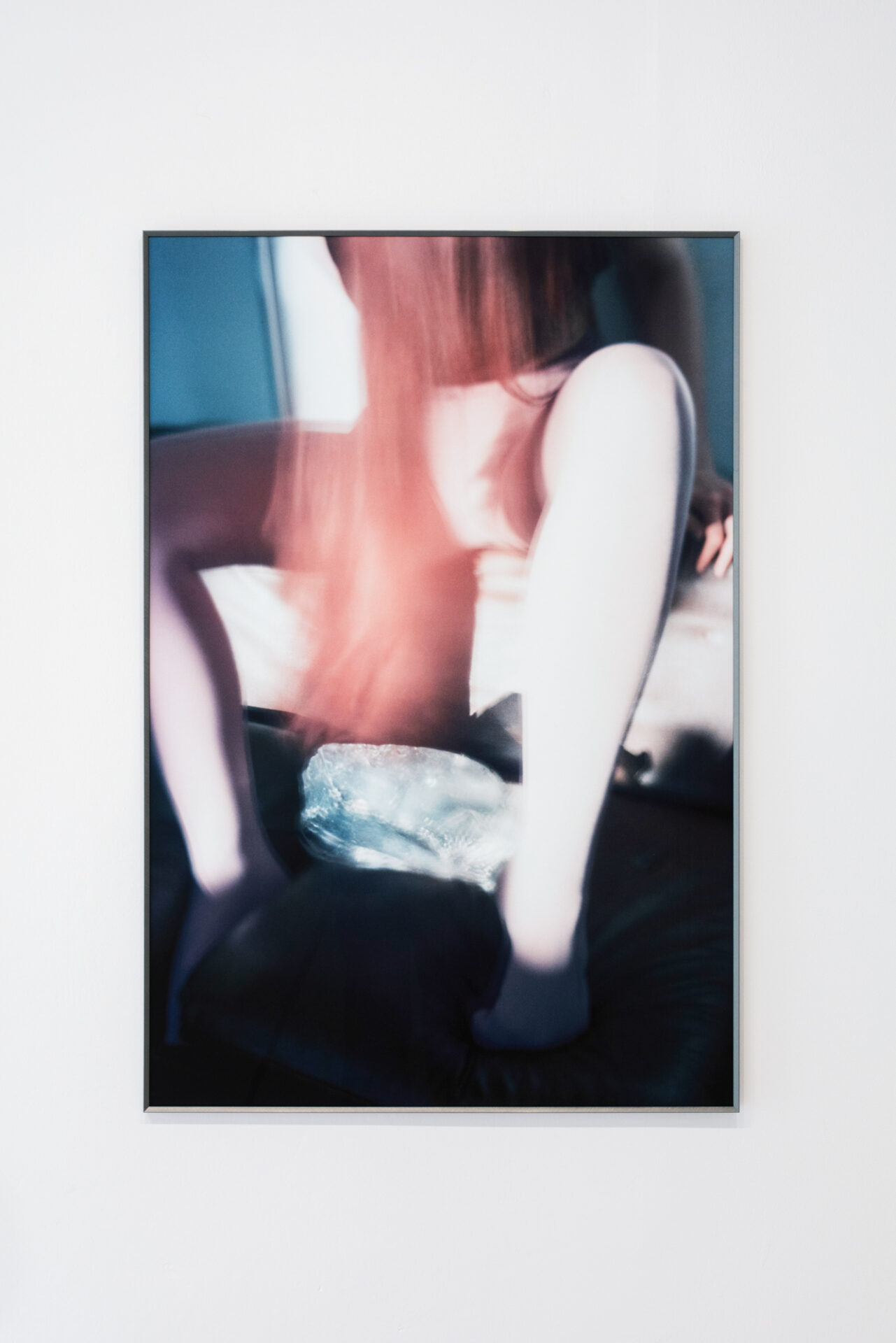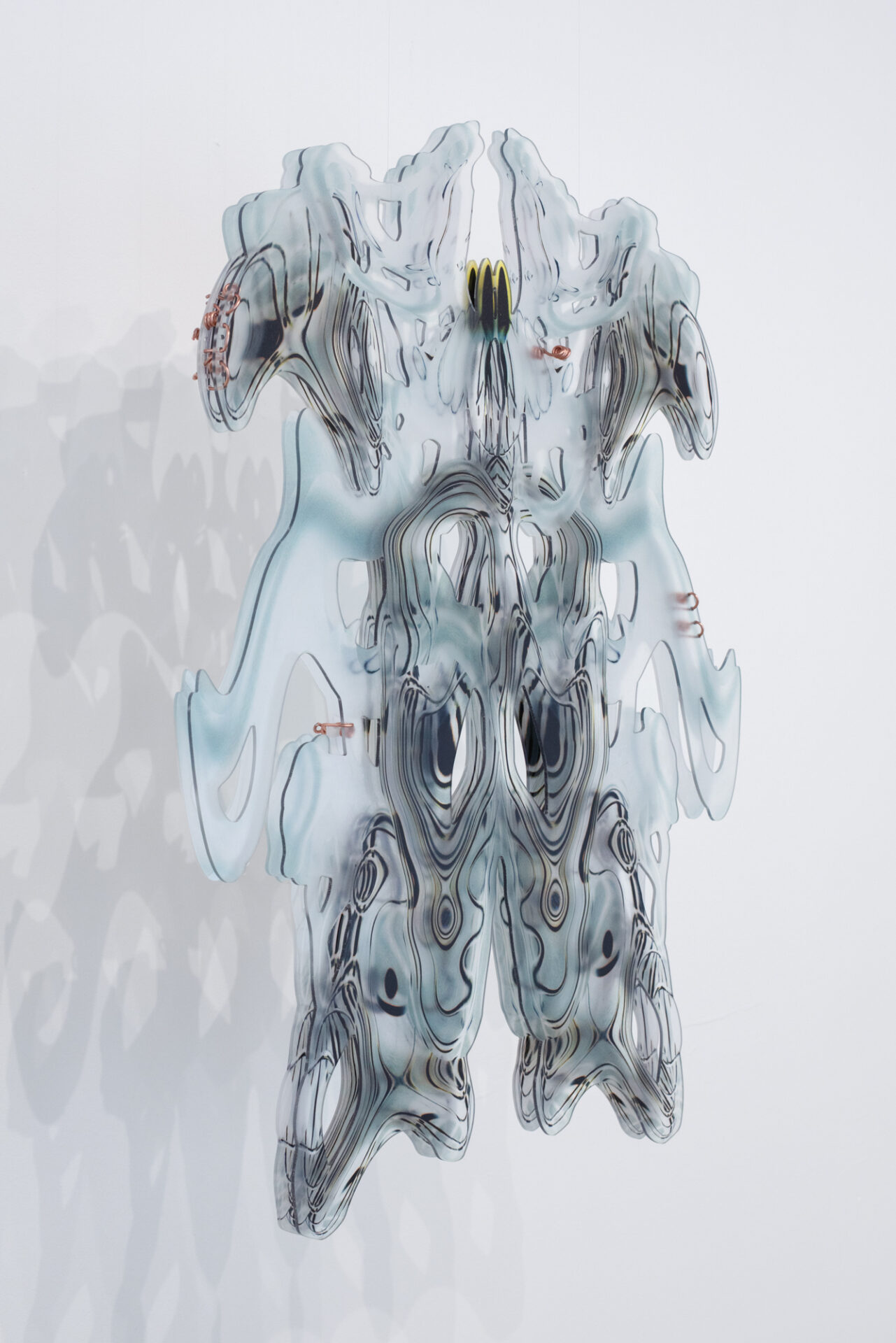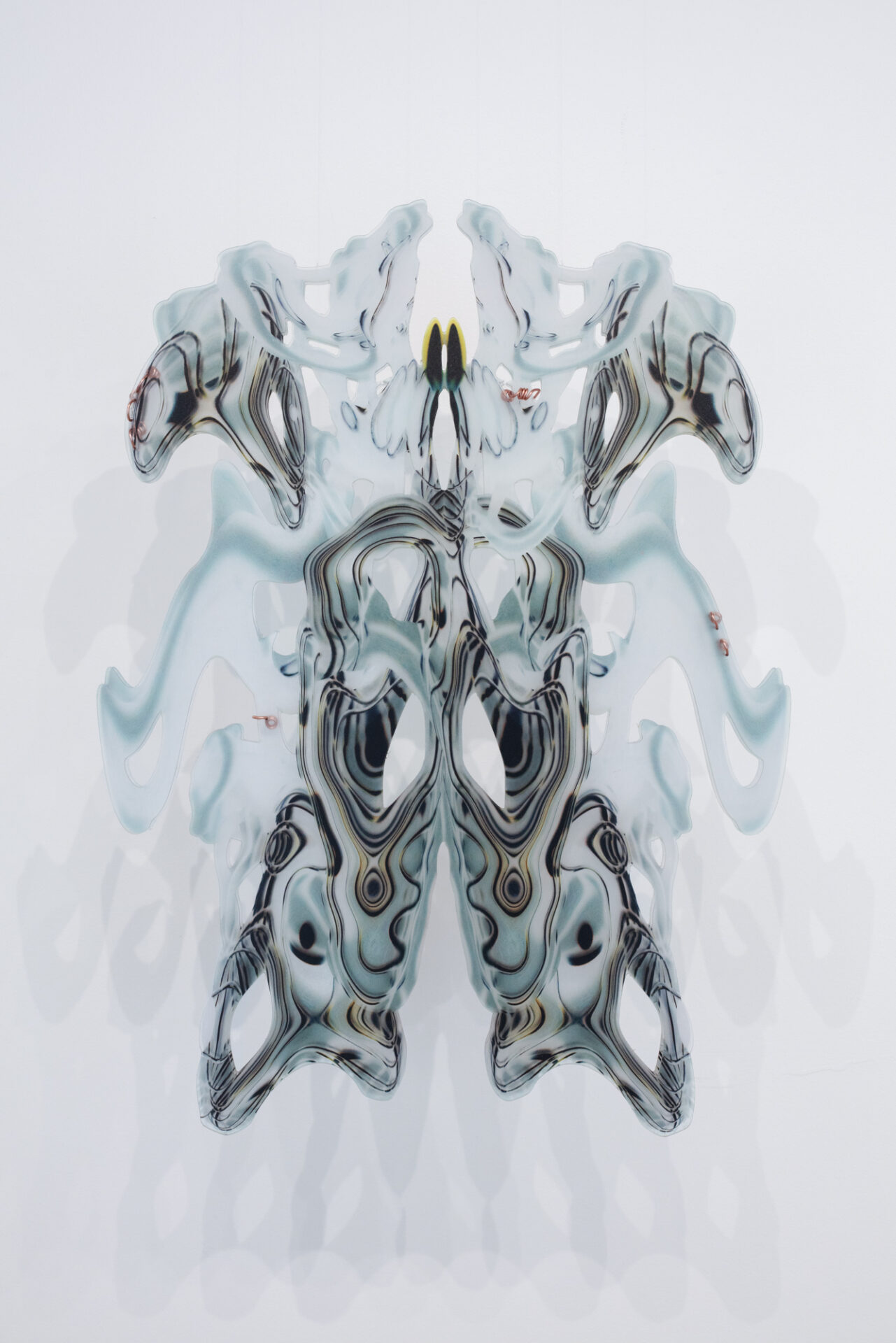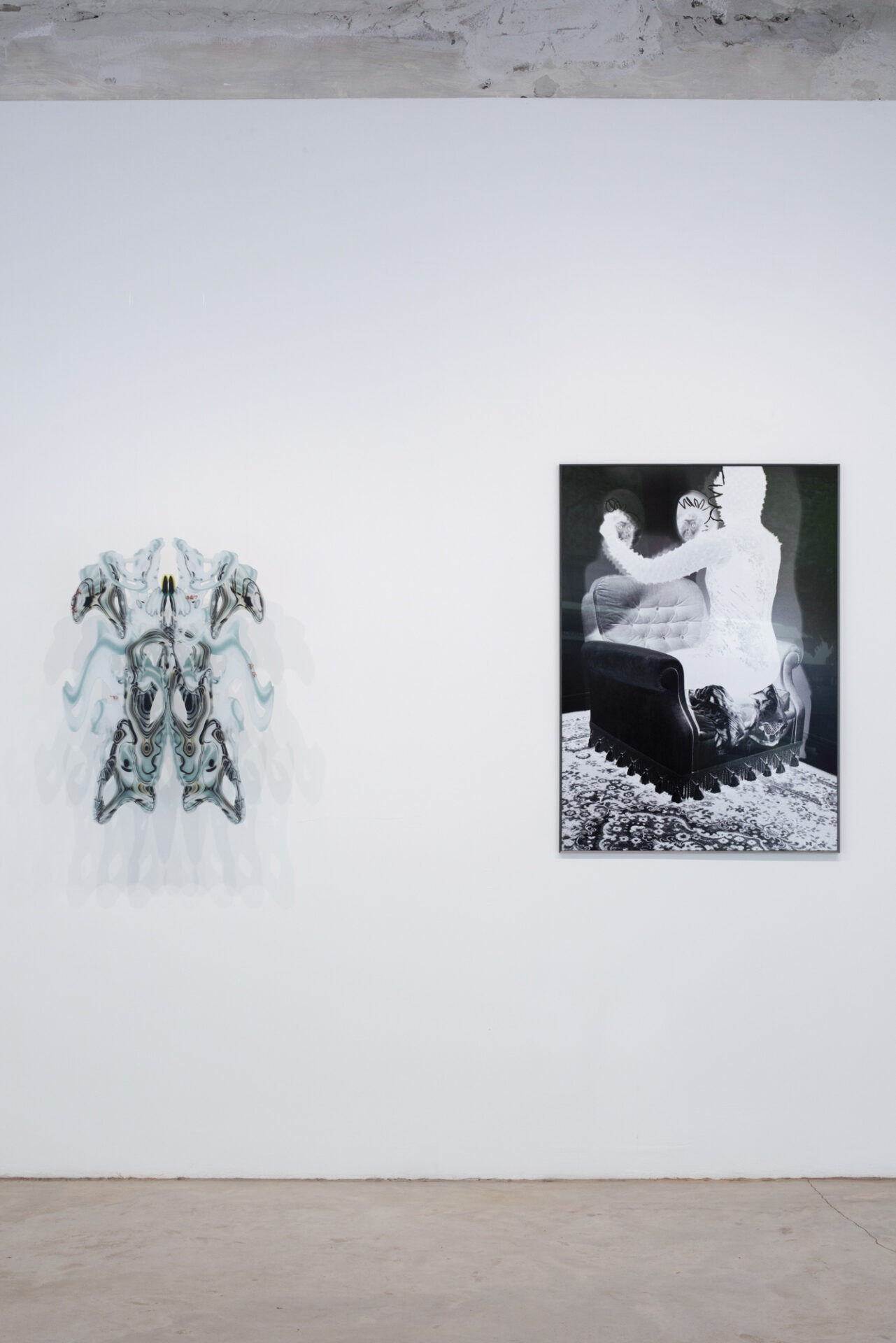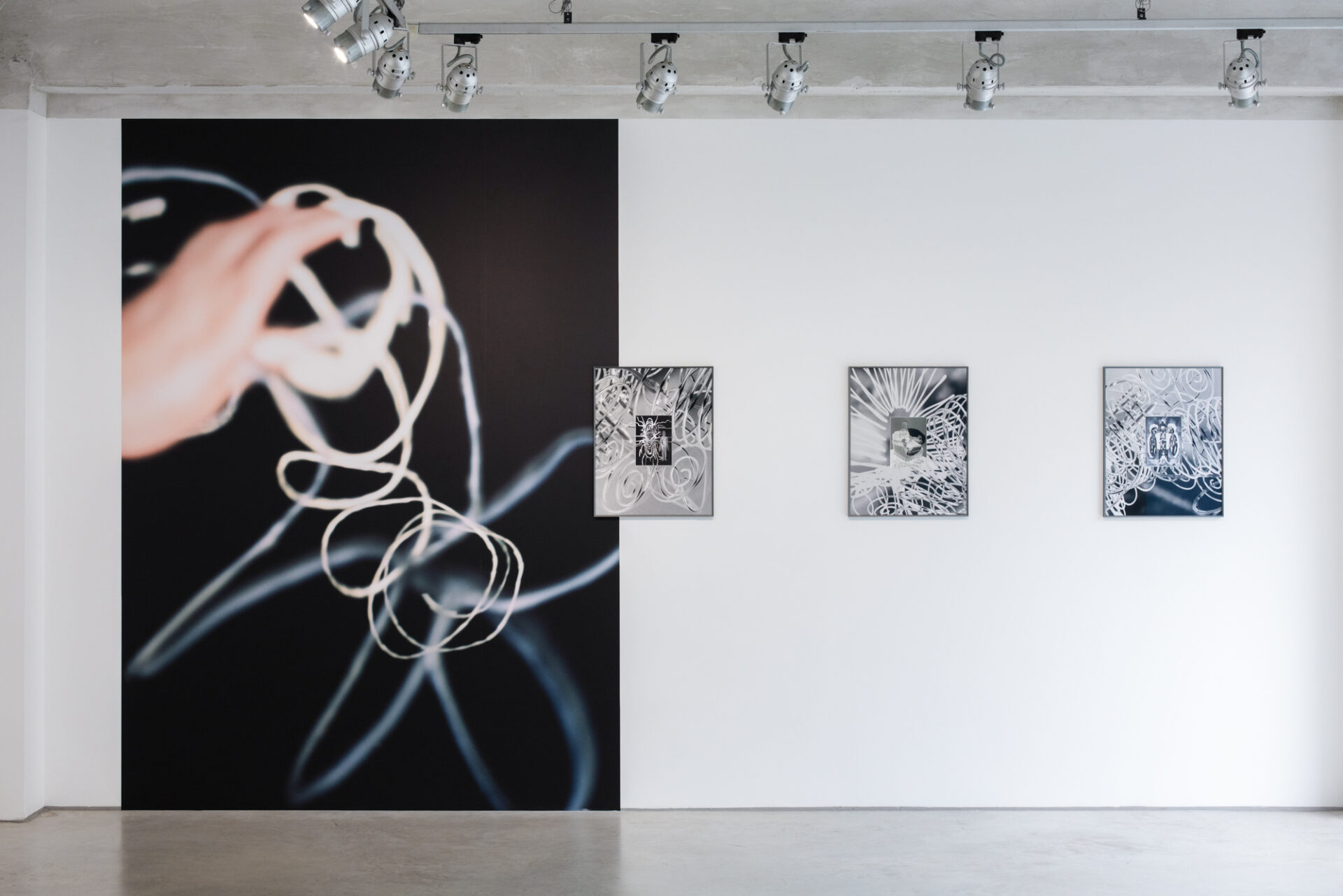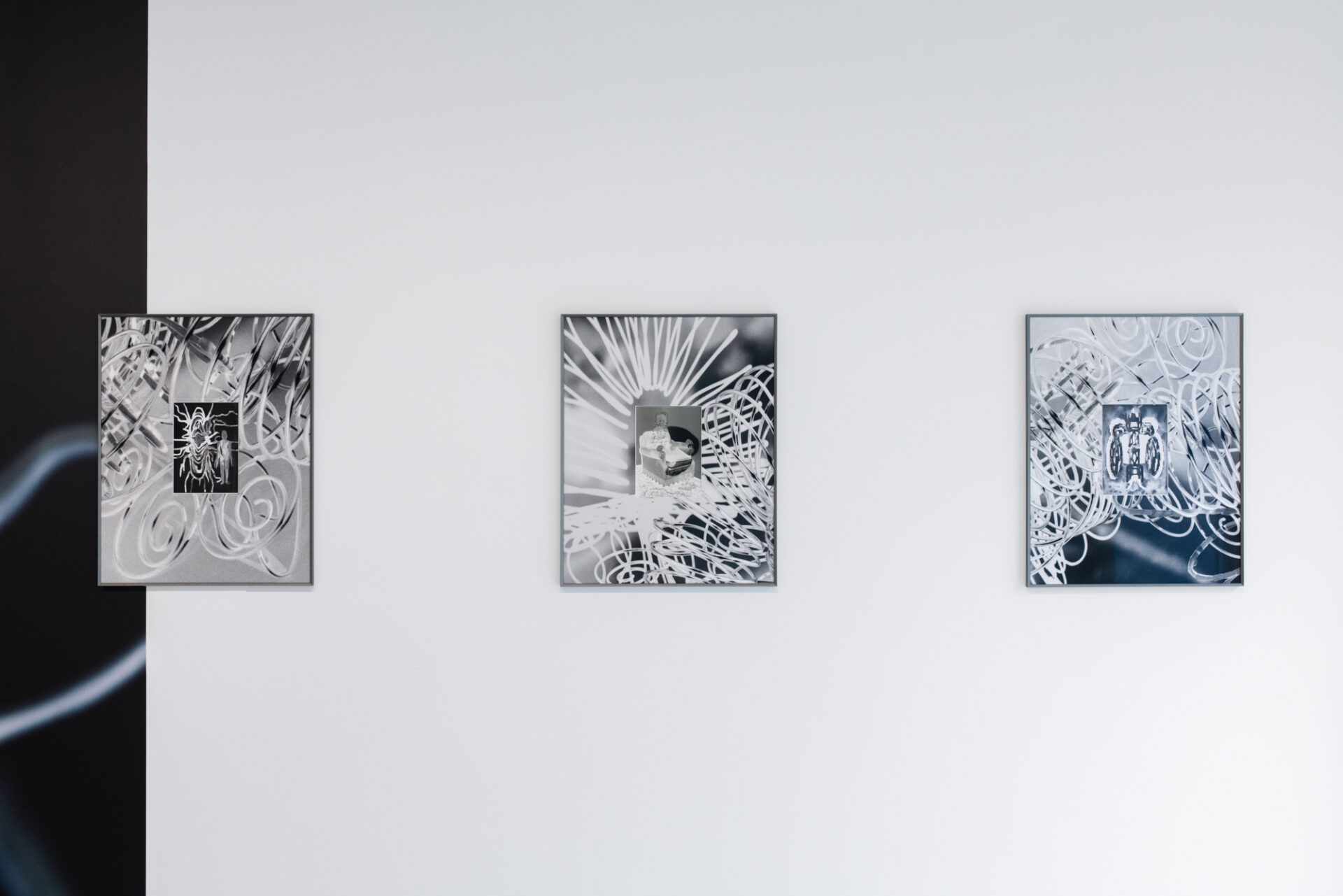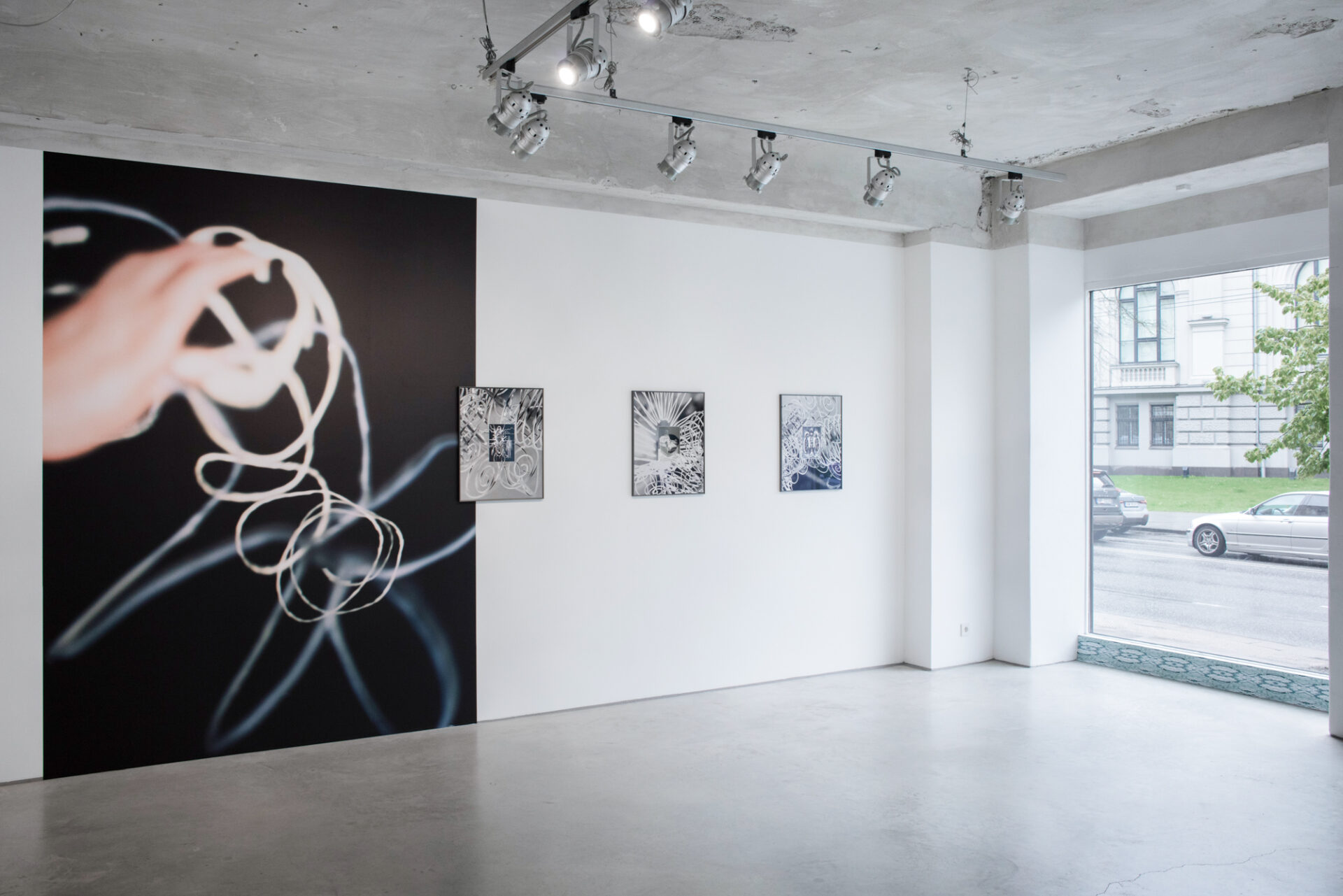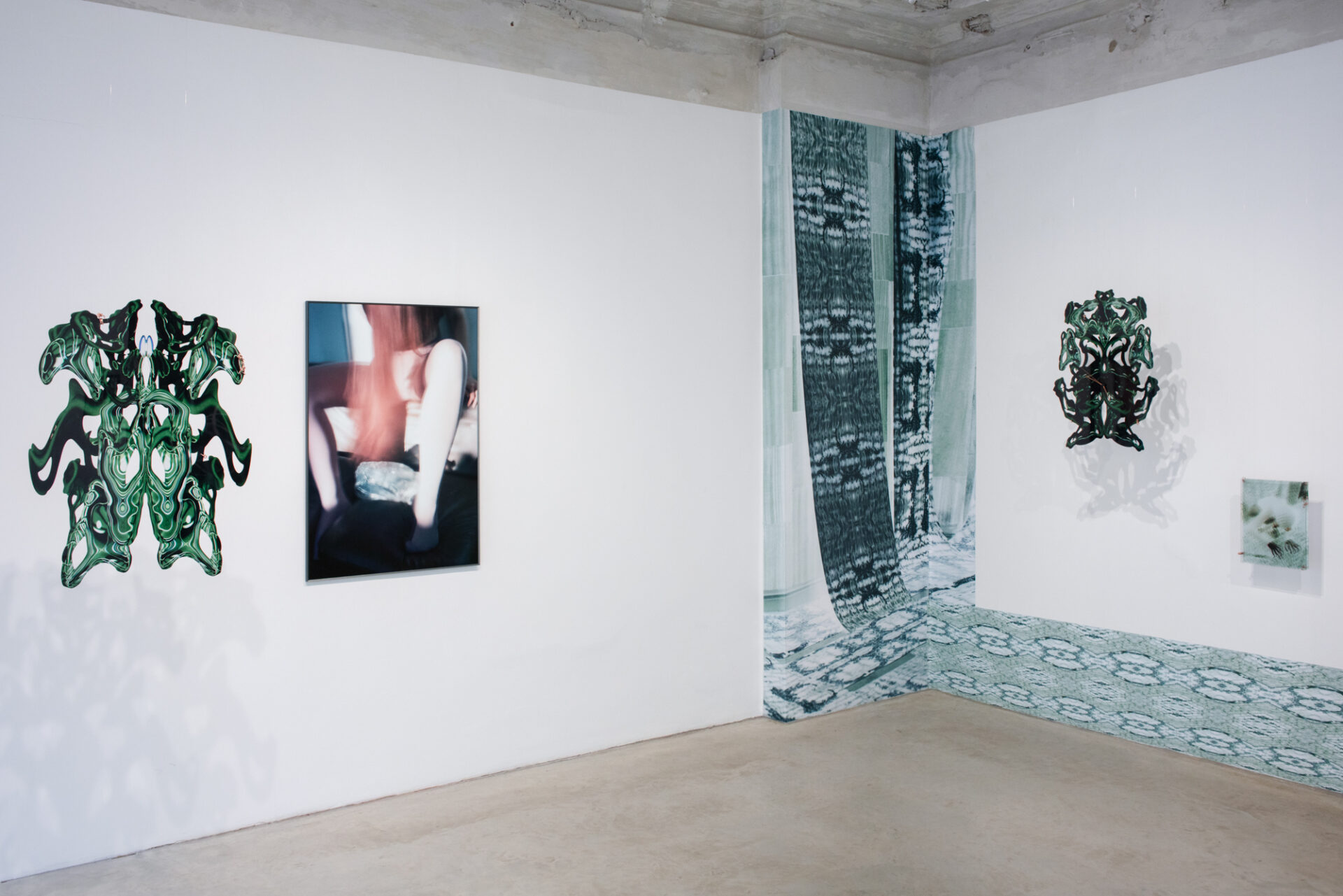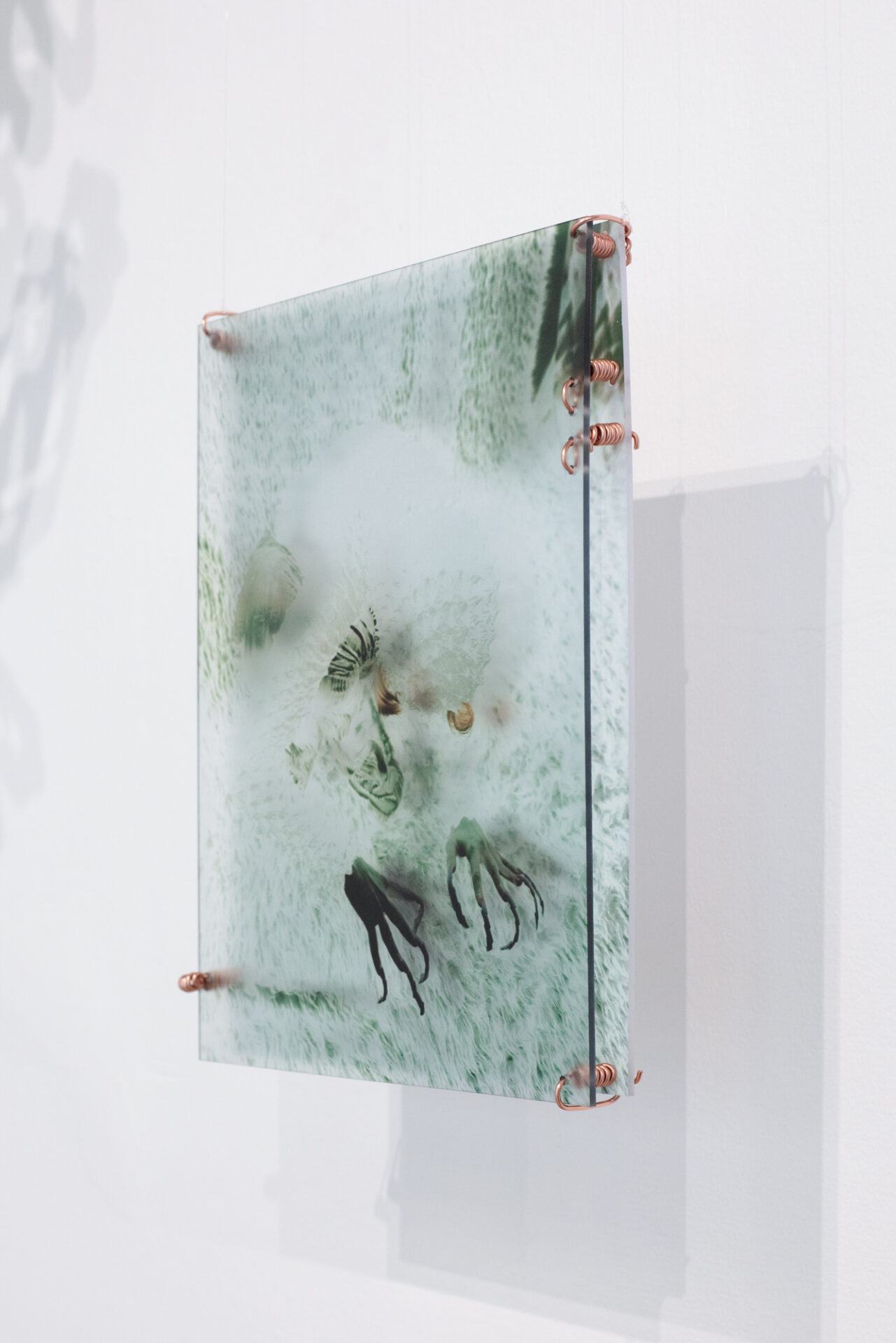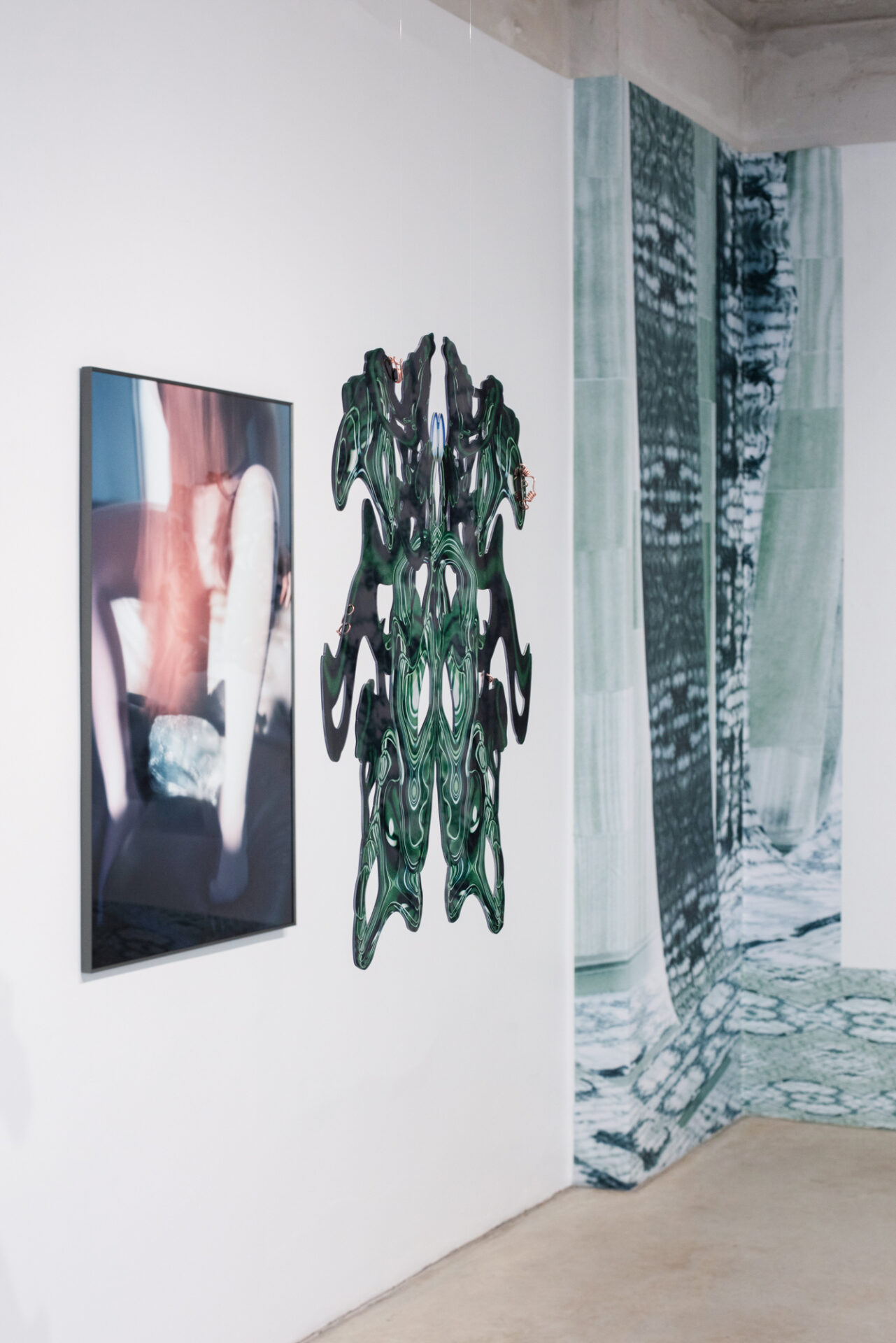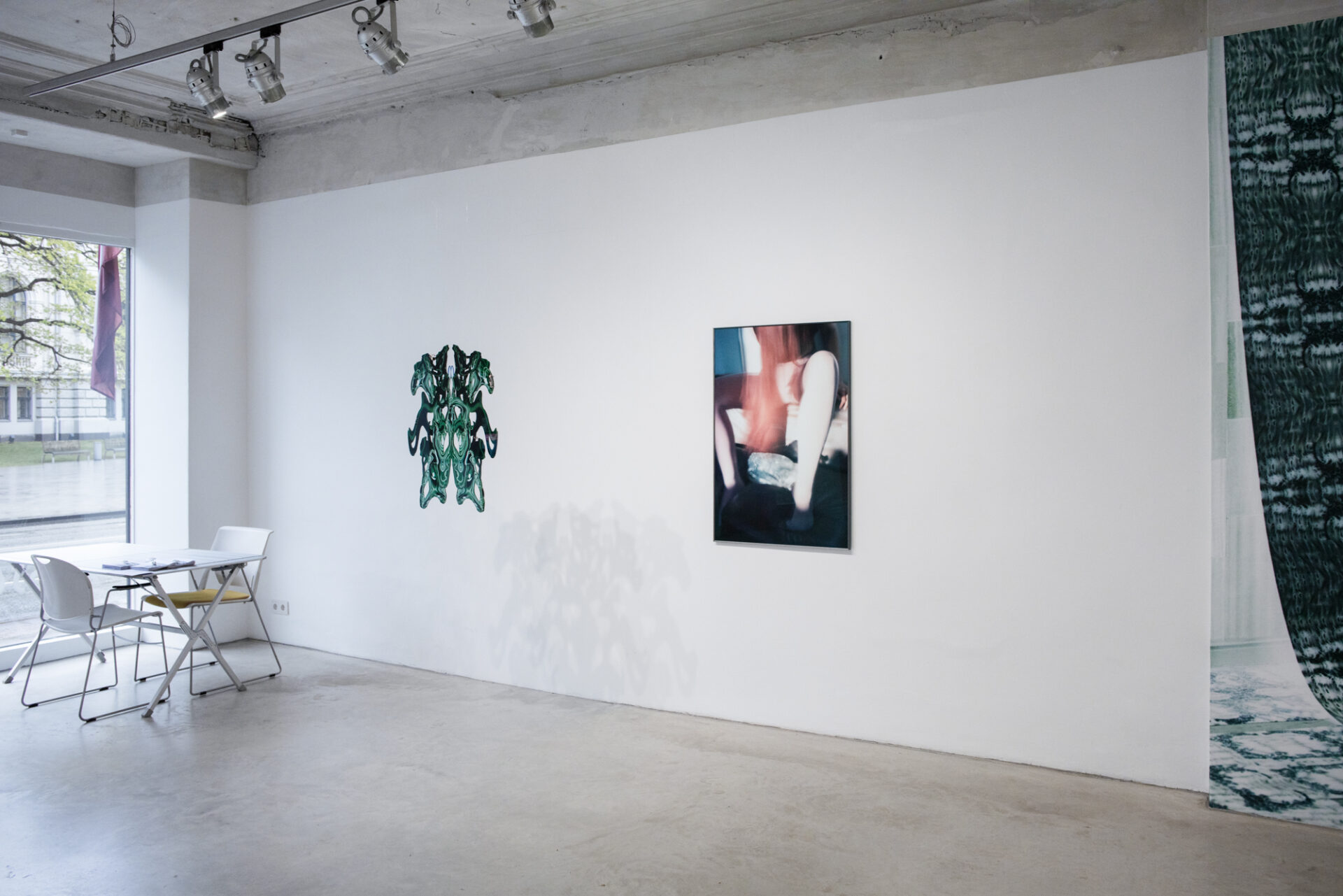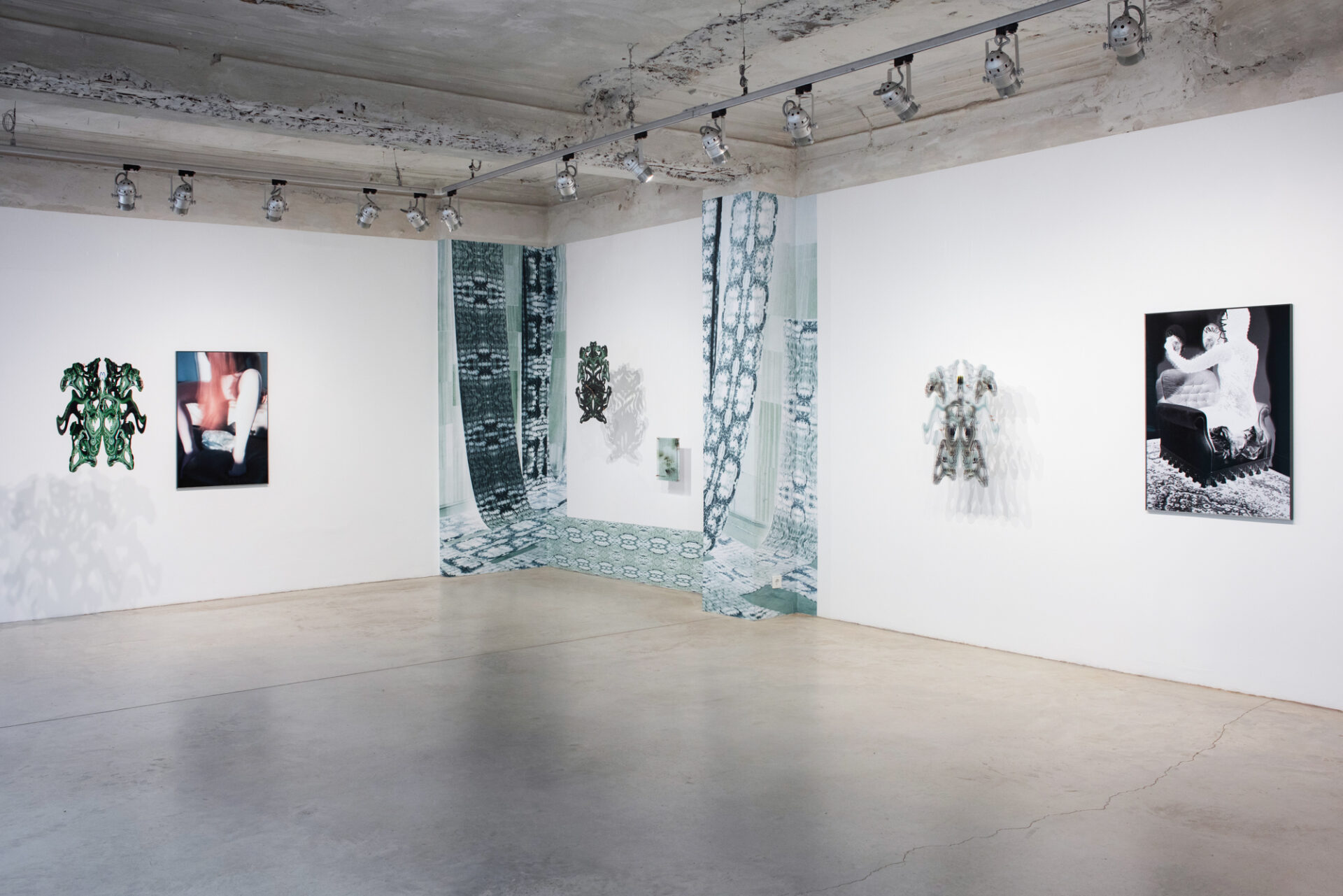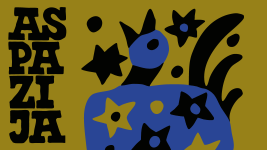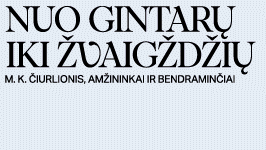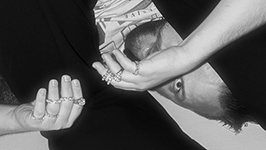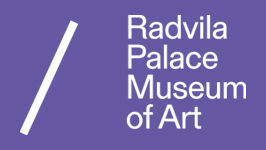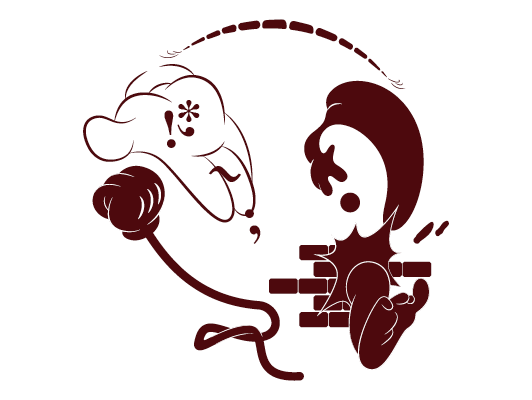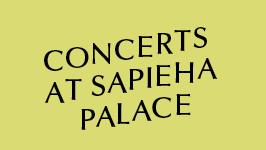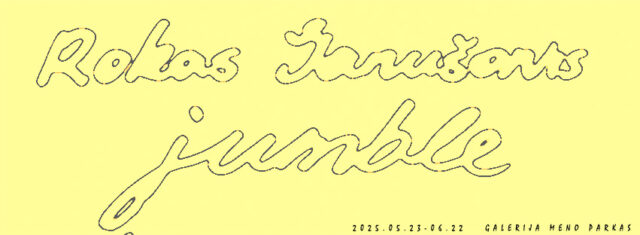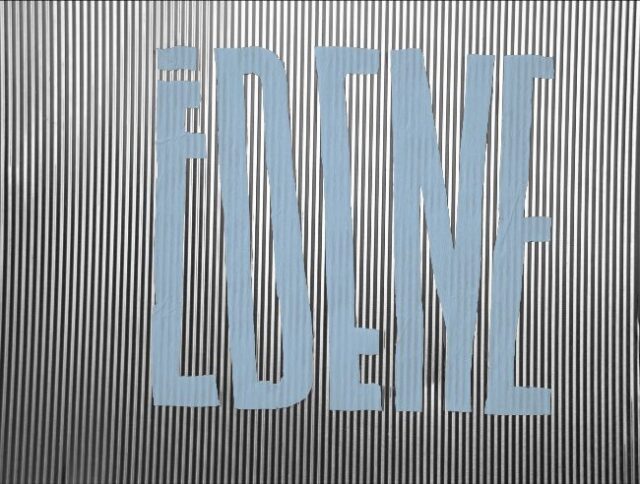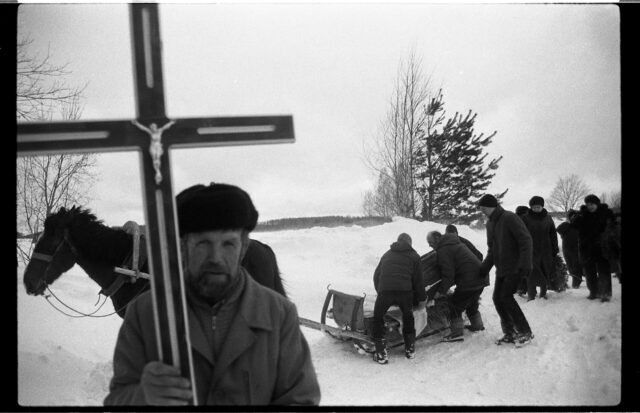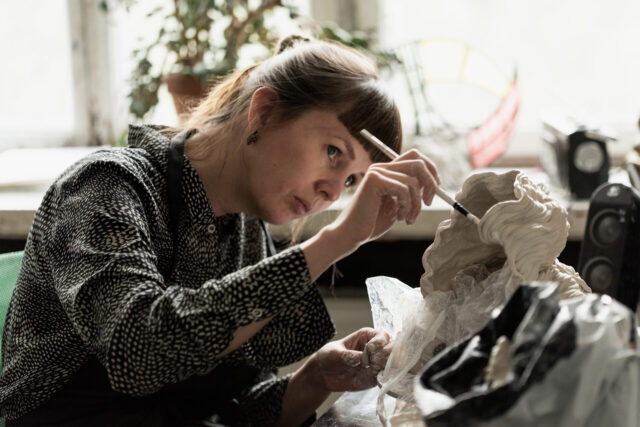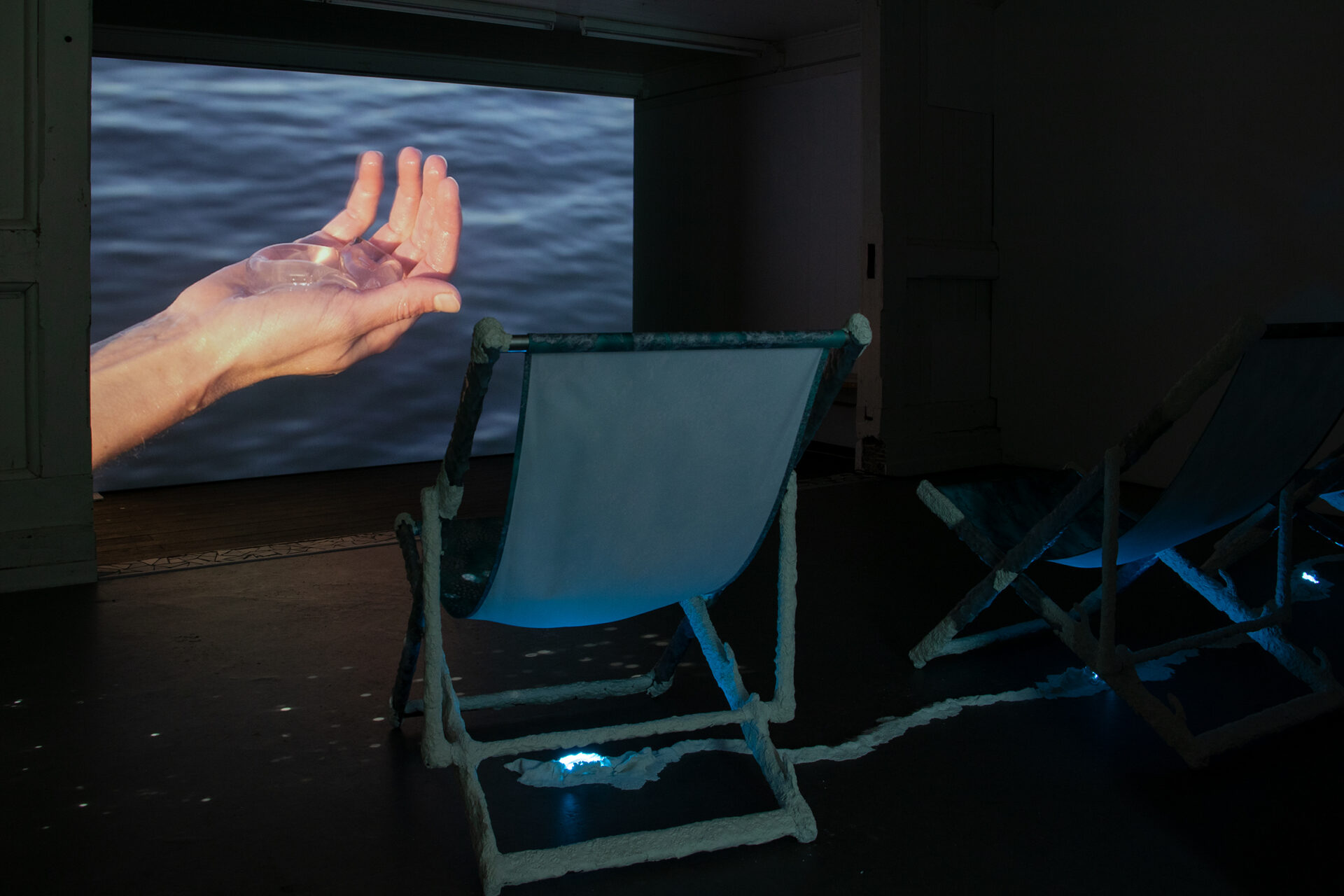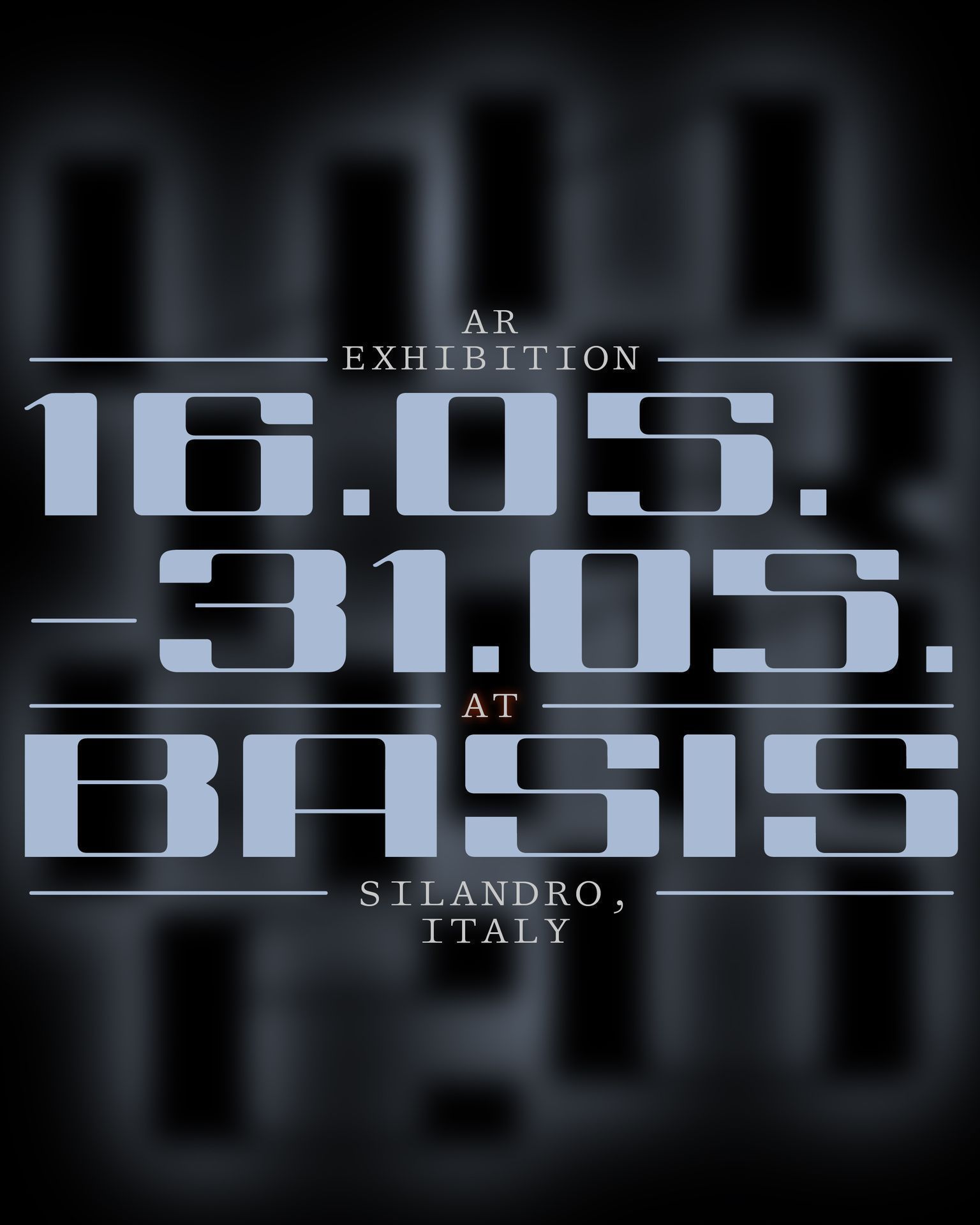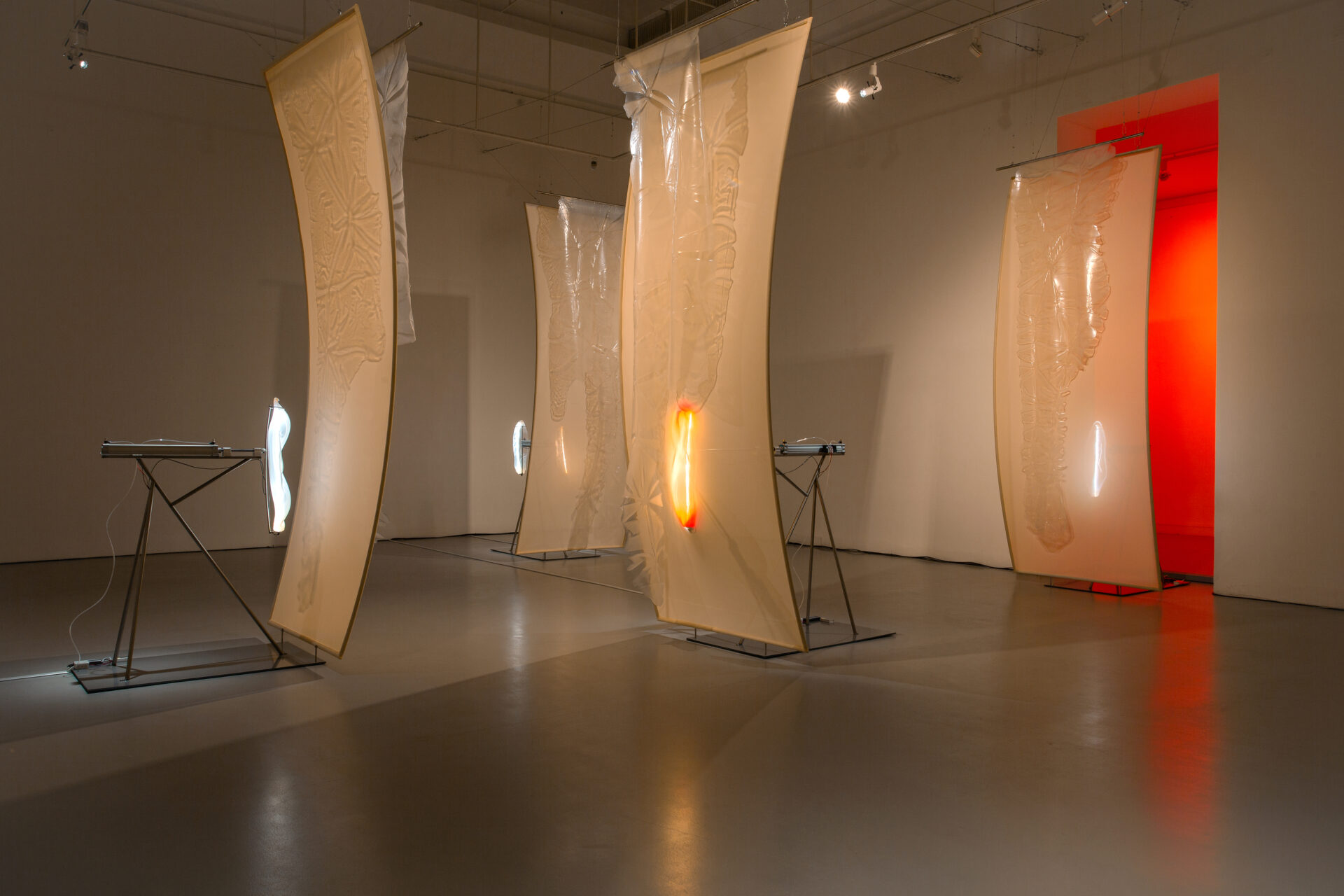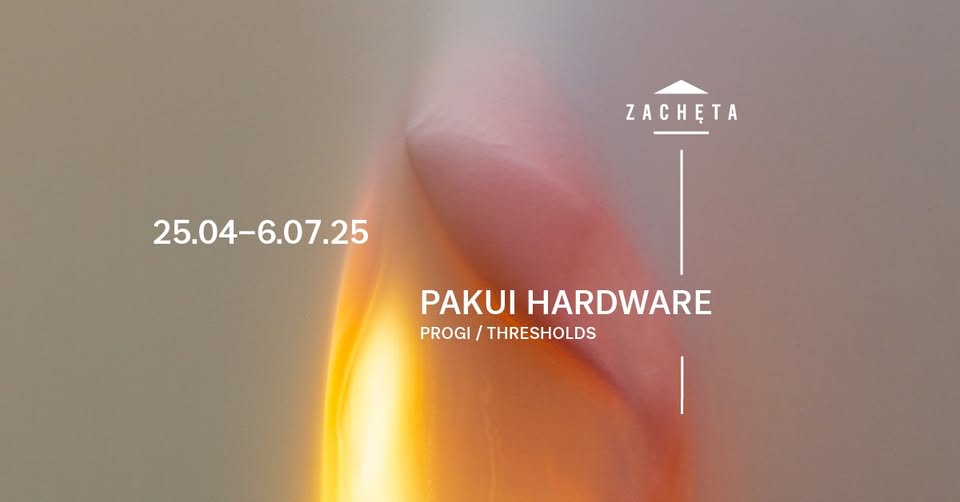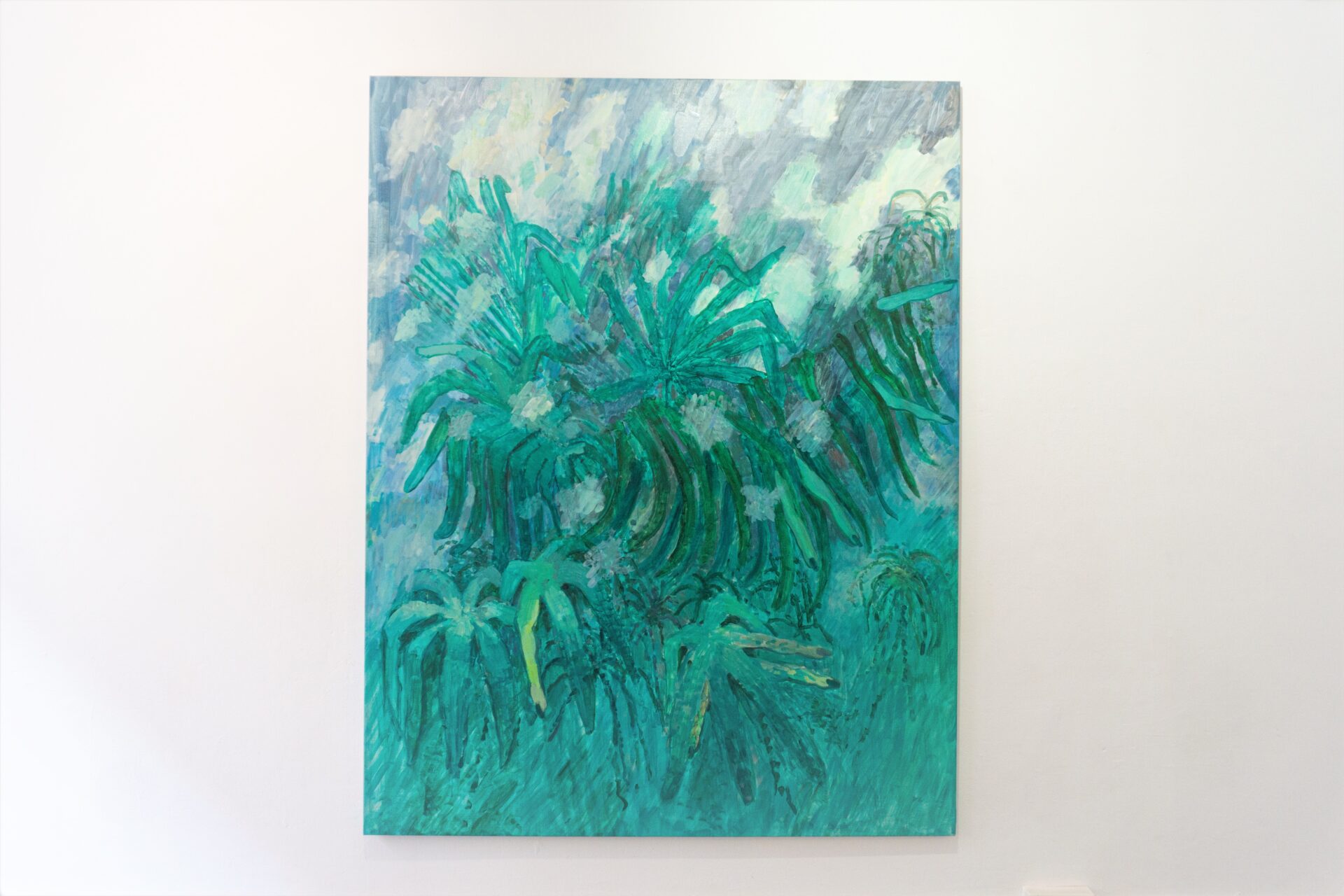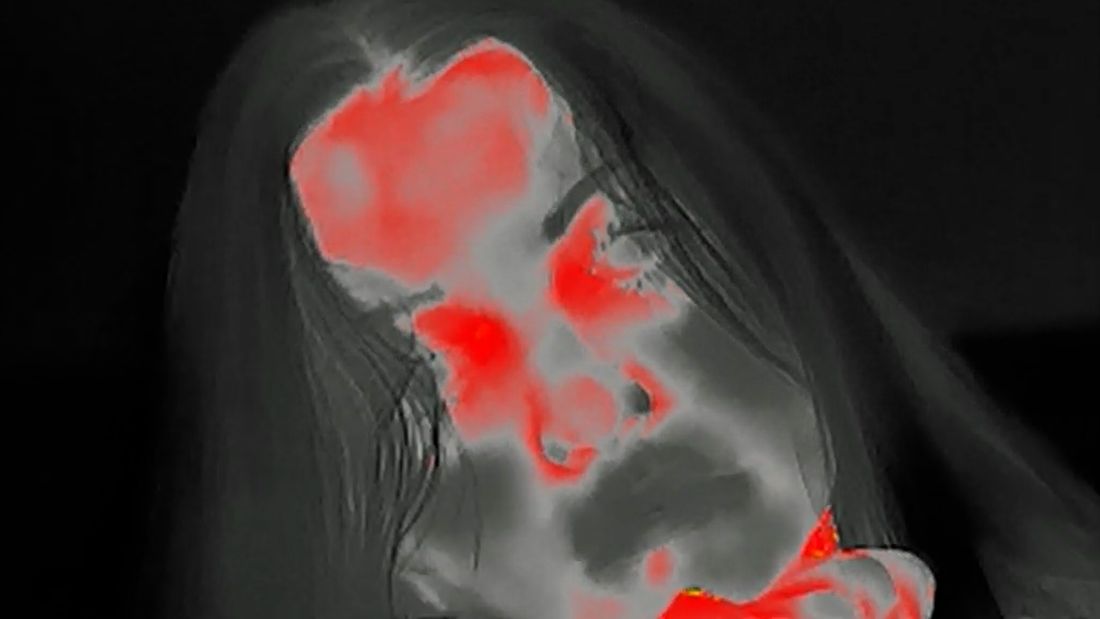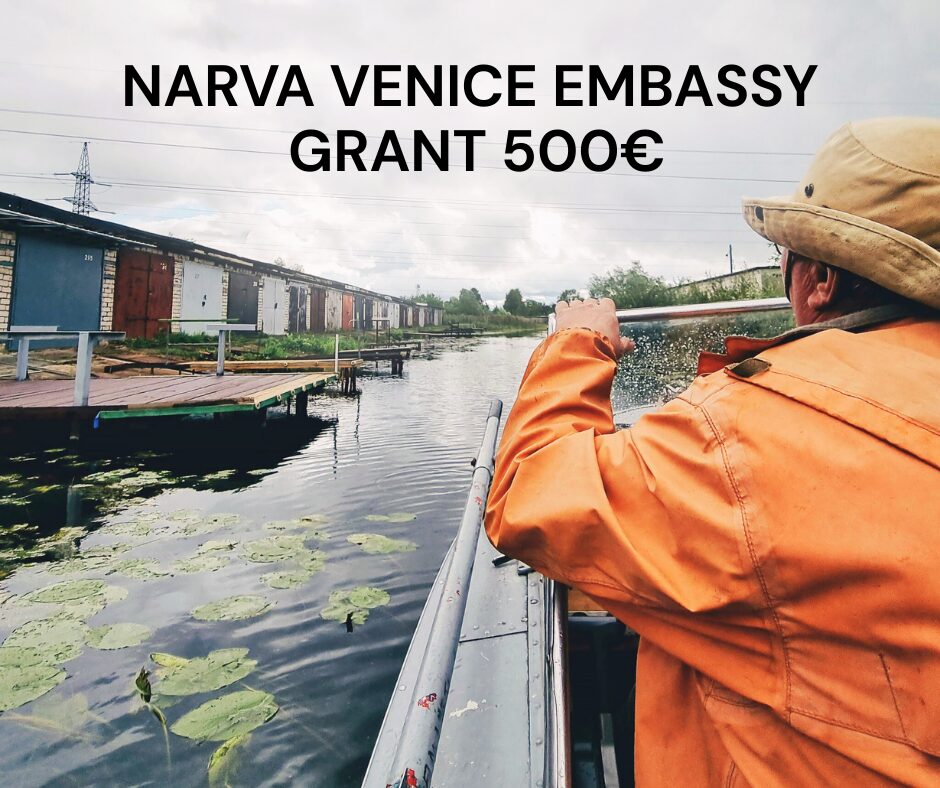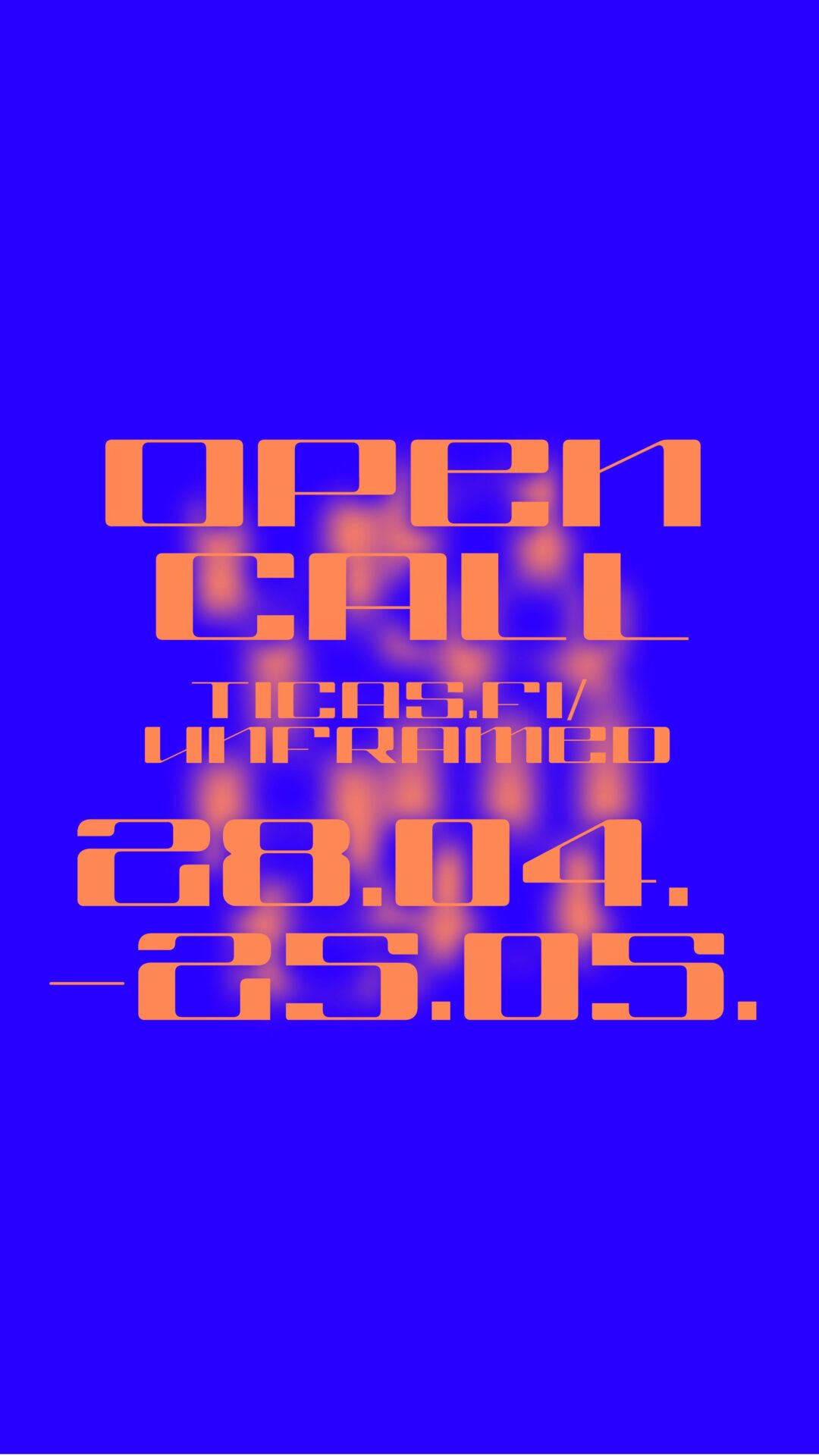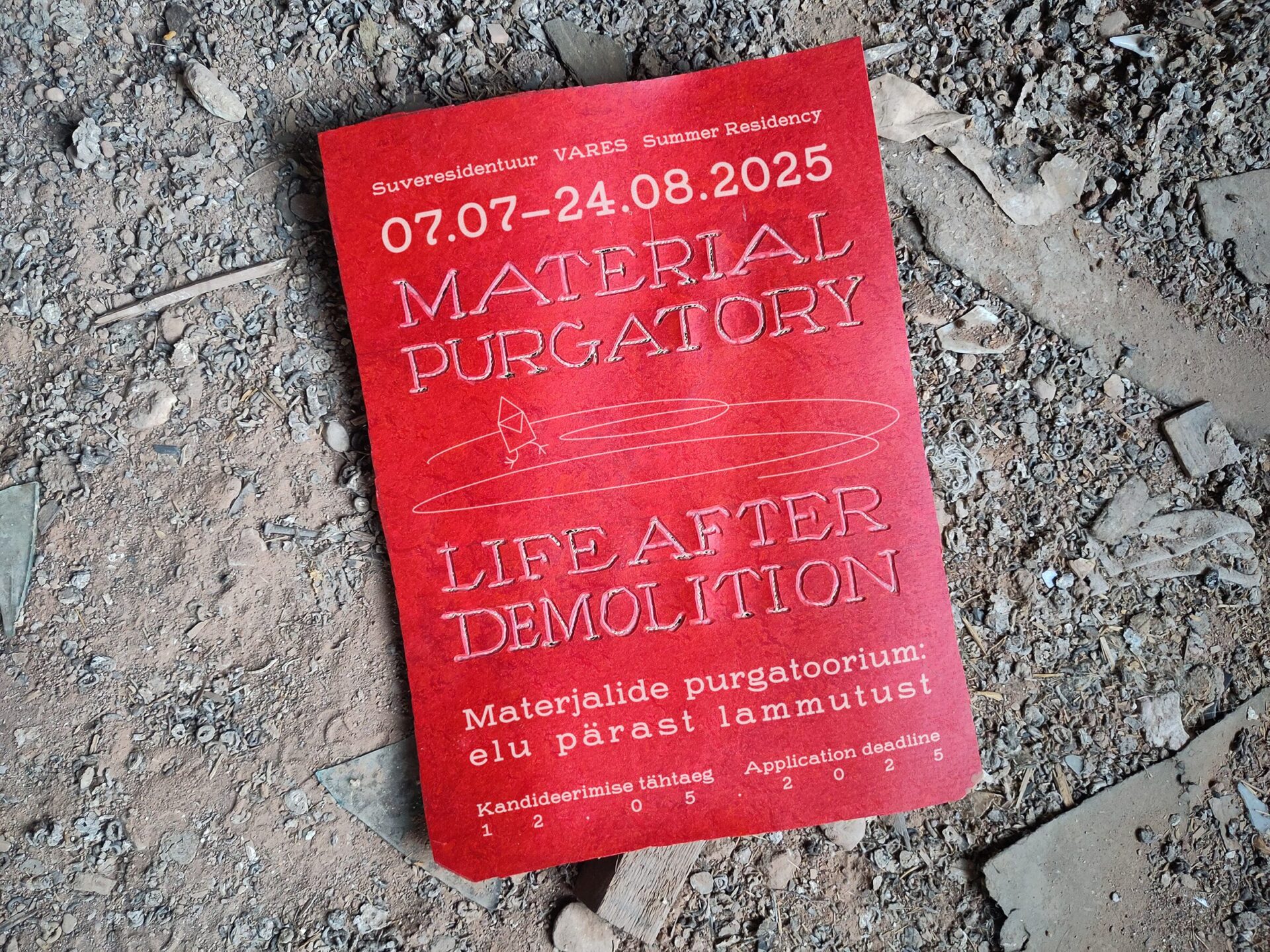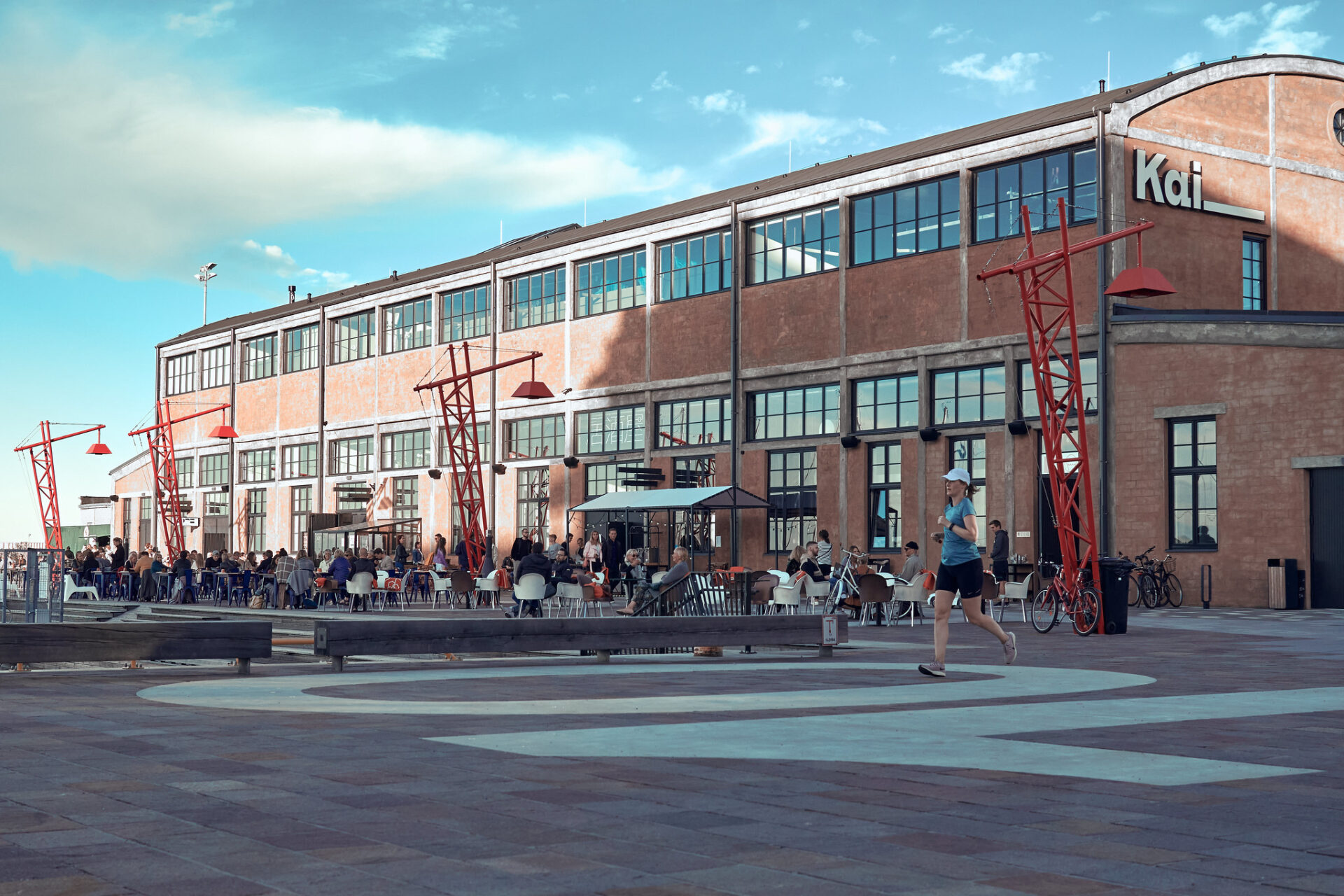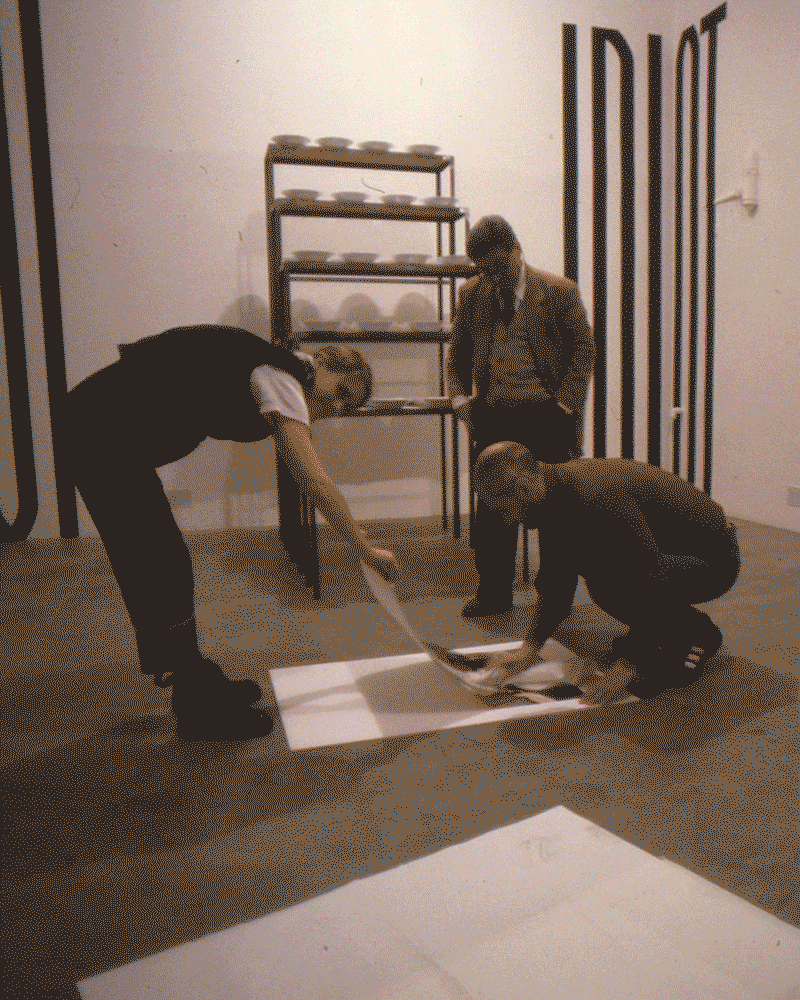The Atlanteans used crystals in unlimited quantities to produce energy, converting solar energy into electrical energy. Some of the Atlanteans who managed to escape took the crystals with them to other lands. In Egypt (their first place of refuge – translator’s note) they built pyramids, using the crystals to lift and place massive blocks of stone.*
In the exhibition “Voltentity”, Agate Tūna focuses on quartz crystal as a mediator of spiritual energy and technological environment, continuing the research of the ghost in photography initiated in her previous projects (“Techno-Spectre”). In her latest series of works, Tūna has created a visual diary of visible and invisible sensations, tracing the ability of energy, memory and identity to transform under the influence of technology. The title “Voltentity” combines the words ‘Volt’ (voltage) and ‘entity’ (essence), reflecting the dual nature of the quartz crystal as both a conductor of spiritual energy and an integral part of the contemporary technological environment.
Honoré de Balzac believed that every picture taken in a photograph takes away part of the subject, making the camera the thief of the soul. Today, this idea takes on a new meaning as the essence of the digital world is projected into electromagnetic space in the form of shadows and data points. The ghost has evolved from a metaphor for a restless soul into an energetic entity that resonates with the language of technology – electromagnetic waves, data streams, electronic voice phenomena (EVP), artificial intelligence algorithms and other contemporary media. The quartz crystal becomes a symbolic bridge to such a transformation – its piezoelectric properties have made it today an indispensable element in military radios, computer chips and mobile phones.
For Agate Tūna, process is essential, a curious dialogue with materiality and observations of its changes – perhaps this is why she has chosen analogue photography as her main means of expression. Using mirrors, glass, copper wire and scanning, Agate subjects her primary material (raw film) to various multimedia manipulations and interprets the photographic image into plexiglass objects and chemigrams. In addition, spatial extensions of photography enter the gallery as an autonomous affirmation. Furniture, wallpaper, electricity and corporeal symbols captured in pictures of the body are analogous entities that reflect and challenge the digital. At the same time, it is a play with the home as a conceptual place of domesticity and creation, an allegorical electromagnetic field that affects the human (artist’s) body, mind and spirit in everyday life. In this sense, Tūna challenges the female aspects of technology and affirms her belonging to the field of spiritual feminist methodology – the replacement of rational and materialistic patriarchal beliefs with emotional and intuitive knowledge. Spiritual feminism focuses on intuition, energy, nature, mysticism and alternative knowledge systems (dreams, rituals, spiritual practices) as sources of collective transformation, and Agate Tūna’s “Voltentity” ideally embodies its essence, declaring the bodily, cosmic and magical as the central perspective. The grammar developed within the exhibition thus unintentionally and cyclically suggests the crystalline and technological concepts used (entity, technology, mother-plate, memory, nest, etc.) as entities in the female gender.
Agate Tūna & Auguste Petre
*Atlantīda, from the newspaper Rīgas Balss, Nr.170 (21.09.1990).
Agate Tūna (b. 1996) is a multidisciplinary artist from Riga, Latvia, working across photography, photographic installations, experimental video and sound art. Her practice explores the relationship between spirituality and technology from a woman’s perspective. Taking a research-driven, web-like approach, she traces connections between her family’s spiritualist heritage, hauntology, quartz crystals, and techno-specters while examining how historical narratives, personal experiences, and technological advancements shape our perception of the unseen. Photography, as a “haunted medium,” plays a central role in her work, preserving traces of the past while shaping imagined futures. Through analogue and experimental techniques such as chemigrams, she investigates the materiality of the photographic image. From self-portraits to staged compositions, her process is deeply hands-on, involving set construction, object-making, and direct engagement with physical materials.
She holds a Bachelor’s degree from the Art Academy of Latvia, Department of Painting (2020) and a Master’s degree from the Art Academy of Latvia, Interdisciplinary Master’s programme POST (2023), she has also graduated from the ISSP School of Photography (2022).
Recent group exhibitions include: “Beyond Our Bodies Our Beings Extend”. Pilot Gallery. Riga, LV (2024); “The Elevator Chats 2.0”. Robert Capa Contemporary Photography Center. Budapest, HU (2024); “New Address: EDEN”. Kim? Hanzas 22, Riga, LV (2024); “Contemporary Histories of Photography I / Who Has Come Here?” RFB, ISSP Gallery. Riga, LV (2024); “Metahorror”. Both gallery. London, UK (2024); “BDO Emerging Artist Award”, (1st prize). Pilot Gallery, Riga, LV (2023); “Chasing the Devil to the Moon”, Tallinn Art Hall. Tallinn, EST (2023); “Flora Fantastic”. Apexart Gallery. New York, USA (2022); and solo exhibition “The Order of Invisible Things”. DOM Gallery. Riga, LV (2022).
Supported by: Novum Riga Charitable Foundation, GroGlass, State Culture Capital Foundation and RAW.
Agate Tūna
“Voltentity”
30.04.2025 – 01.06.2025
Galerija ASNI
Kr. Valdemāra street 17A, Rīga
Photography: Kristine Madjare
